Let’s face it, the weather in London can get quite gray and rainy, particularly during the wintertime. Feeling rather depressed on a cold mid-December winter day, I decided that my husband and I were in dire need of a ‘sunny winter’ destination. Some quick research, a plane ticket, and a few weeks later, we were on a plane to Spain to explore the city of Seville in the winter.

Winter Weather in Seville
Seville, if you don’t already know is nicknamed ‘the frying pan’ of Europe for its torrid and hot summers. Being from Seattle and now adopted-Londoners, my husband and I are not great with intense weather conditions (note: during the peak summertime, Seville can hit 40 degrees Celsius (105 degrees Farenheit!!!)), so January was the perfect time for us to visit. Even though it was a bit chilly during the nights (a medium-sized denim jacket sufficed for keeping warm), the days were sunny with a gentle 15 degrees Celsius (59 degrees Farenheit).
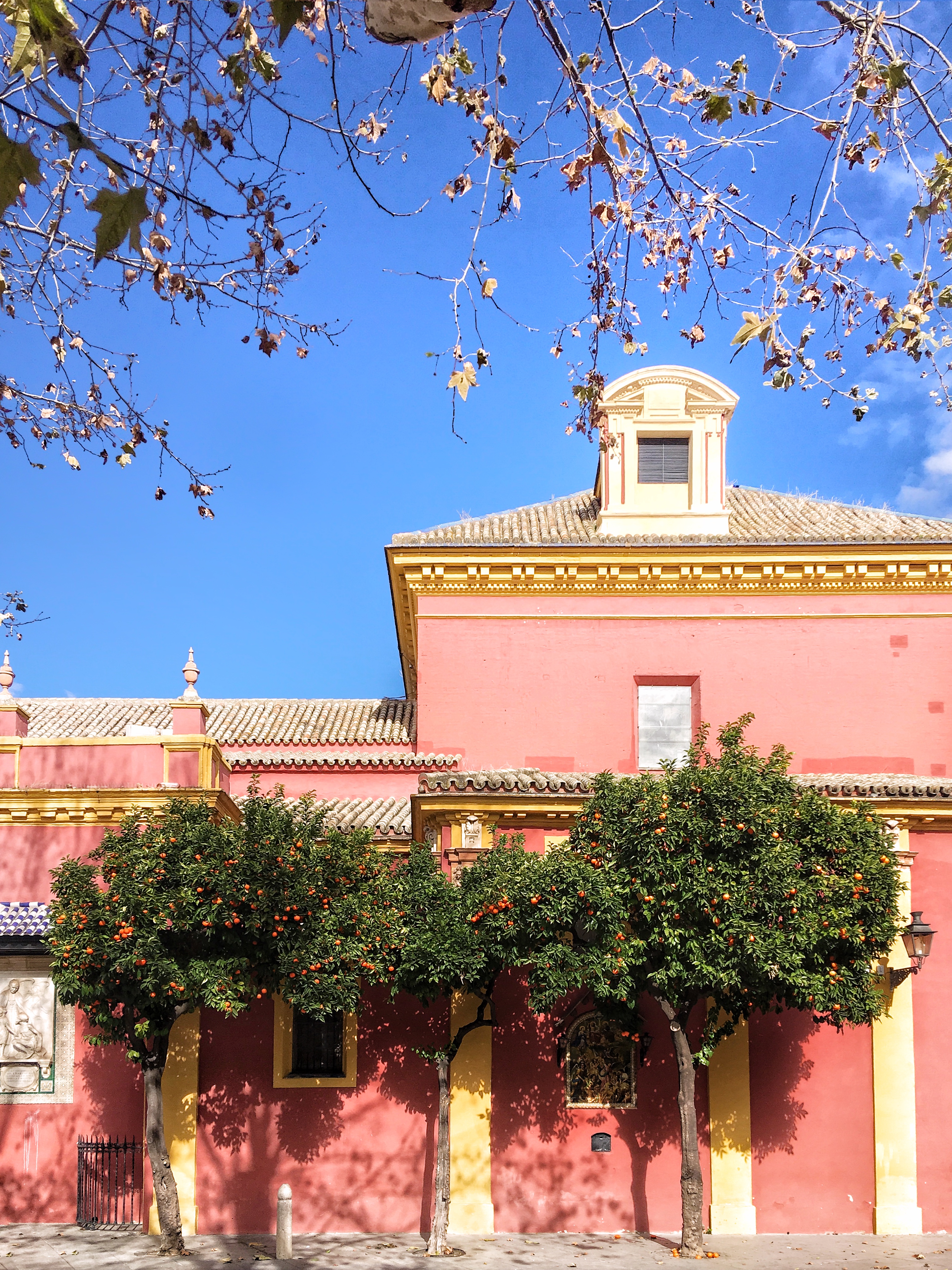
Even in the off-season, Seville is extremely lively and all the main attractions are open (with fewer tourists, hooray!). And despite it being wintertime, the trees that line the streets are brimming with baby oranges, perfuming the air with a light and pleasant citrus scent.
While we were in Seville, I obsessed and delighted over the orange trees of course, having to stop to take a picture every five minutes (my husband was less impressed….he grew up in Florida). We felt that January featured the perfect weather for exploring this wonderful city and enjoying some major tapas bar-hopping!

What to do in Seville
Plaza de Espana
Explore the Plaza de Espana, walk the canal, and admire the bright colors and detail of the azulejos (ceramic tiles). There are 48 ‘alcoves’ lining the semi-circular plaza that have been designed to showcase different parts of the country, and the local food and culture. I could’ve spent hours admiring each of these installations. It made me want to explore more of the country, and get a feel for each of the unique regional cultures and traditions!
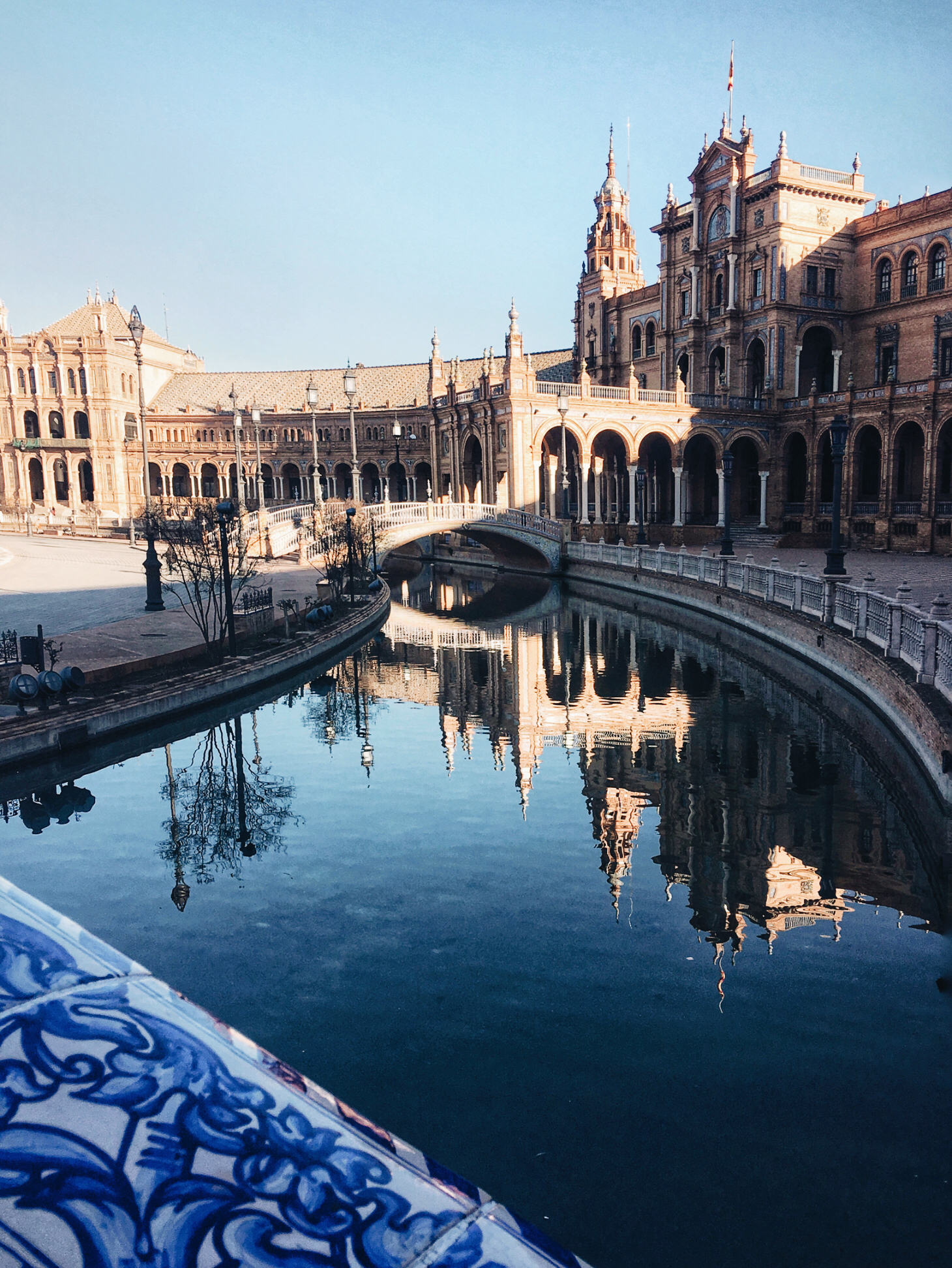
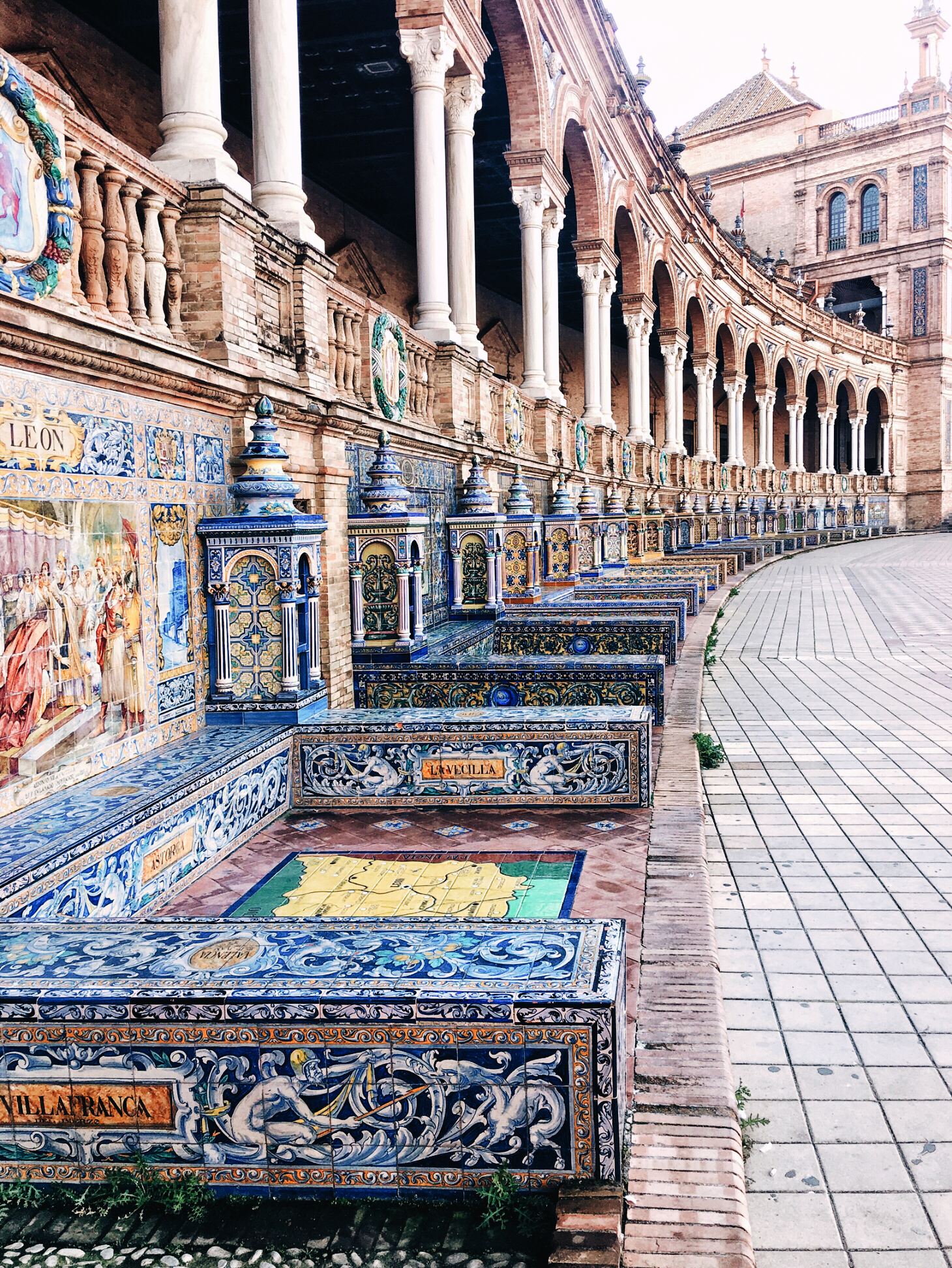
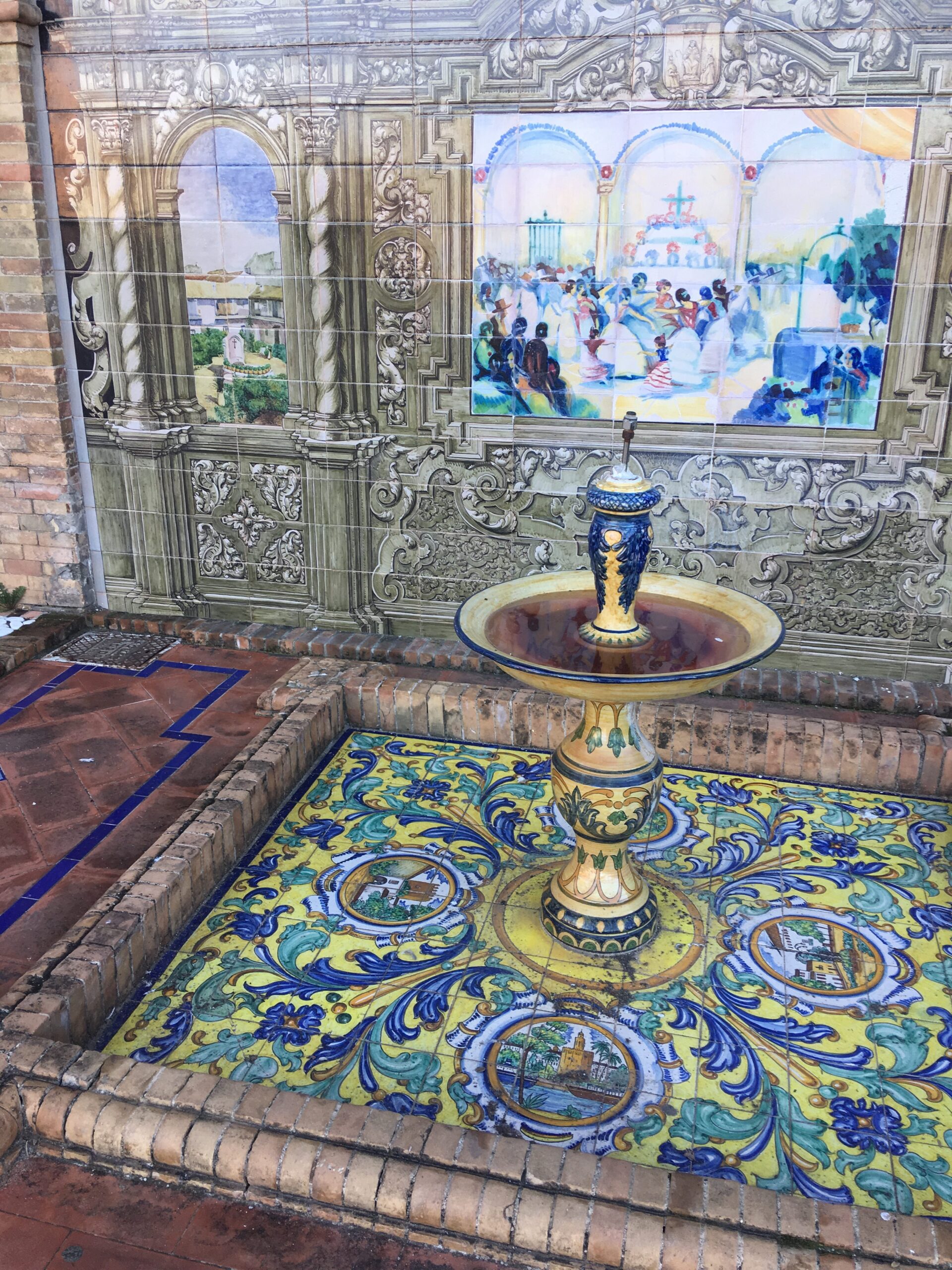
The Plaza was originally built for a world fair, but today, houses multiple government offices. Entry to the Plaza is free-of-charge!
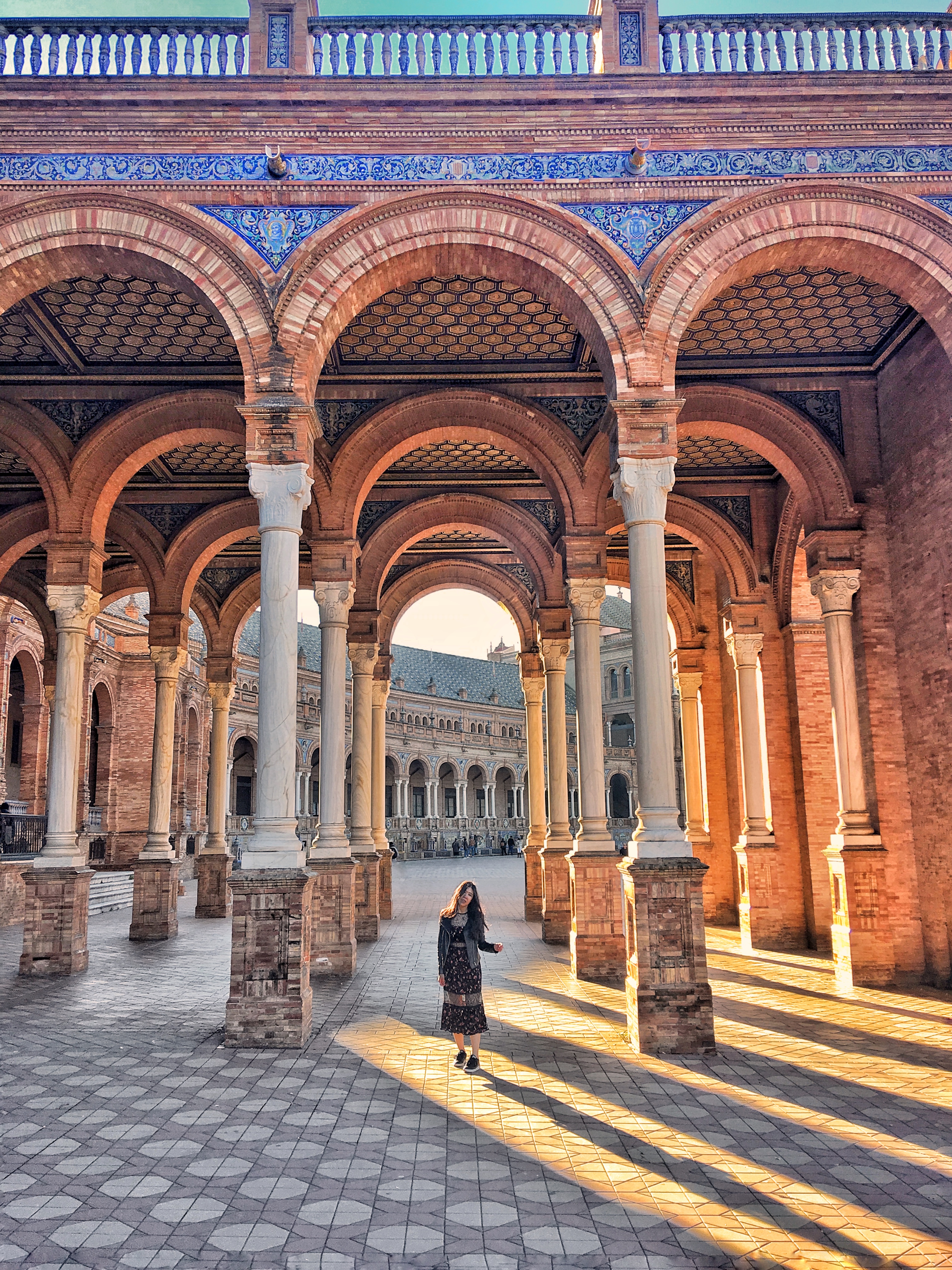
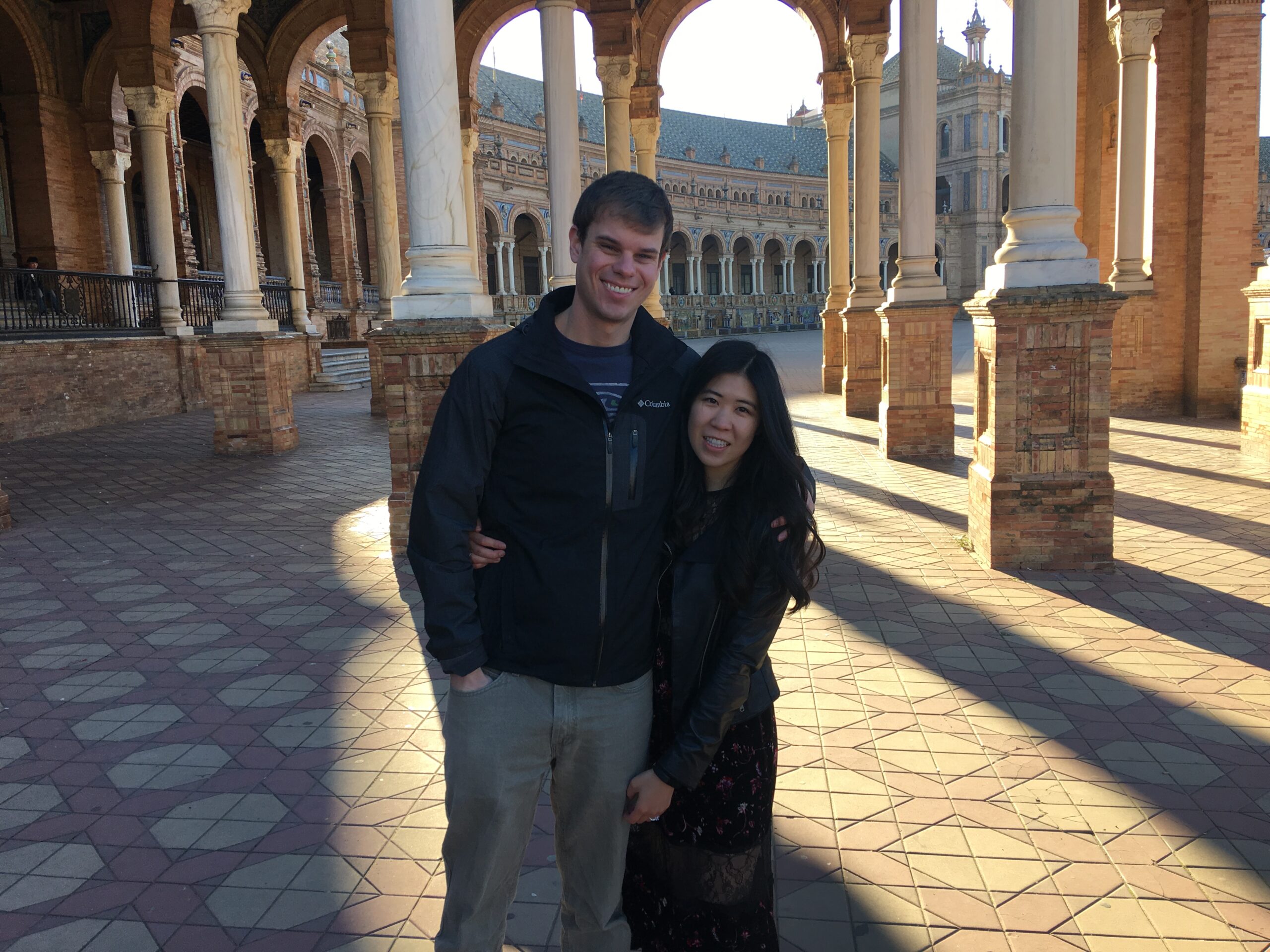
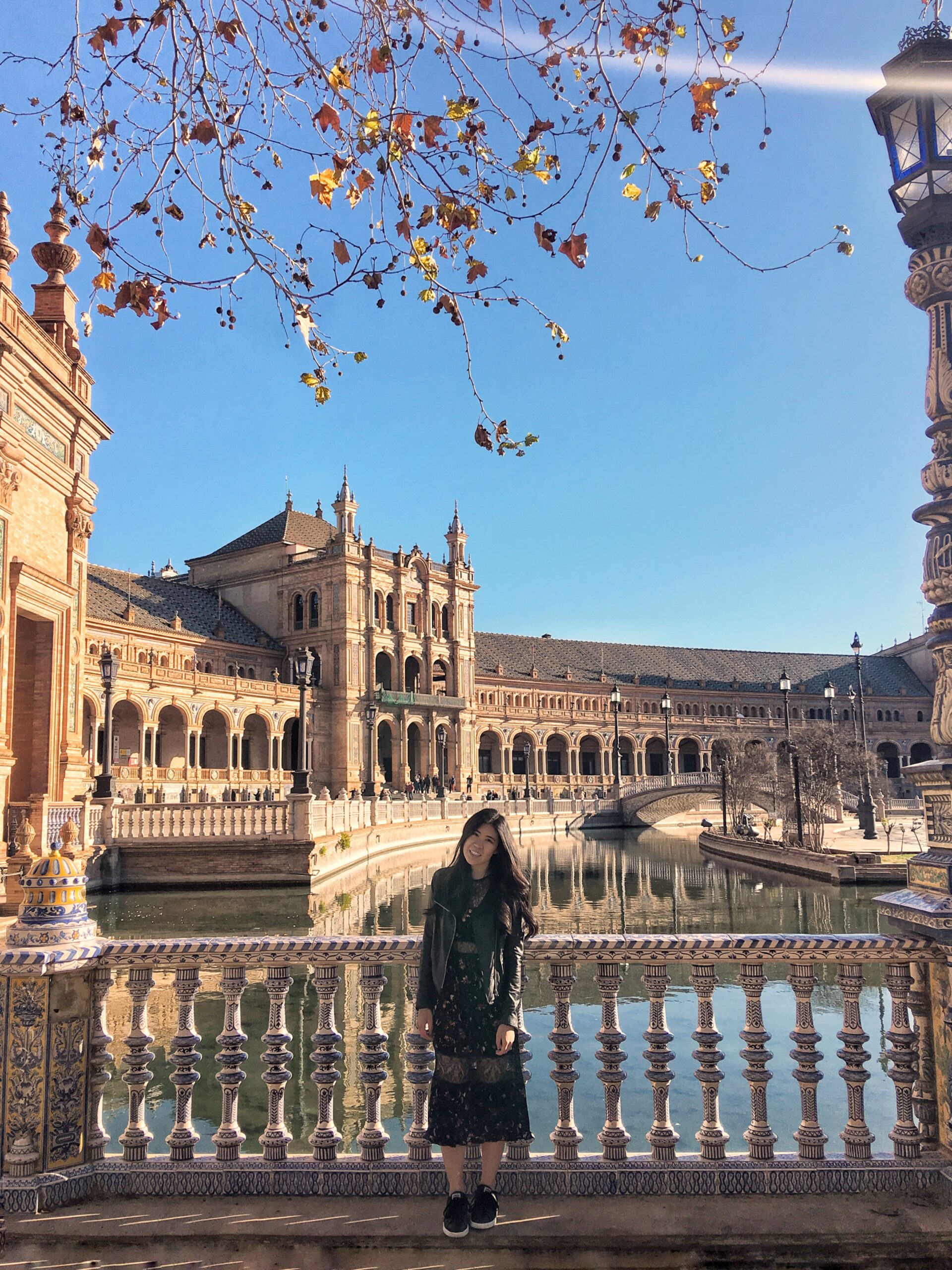
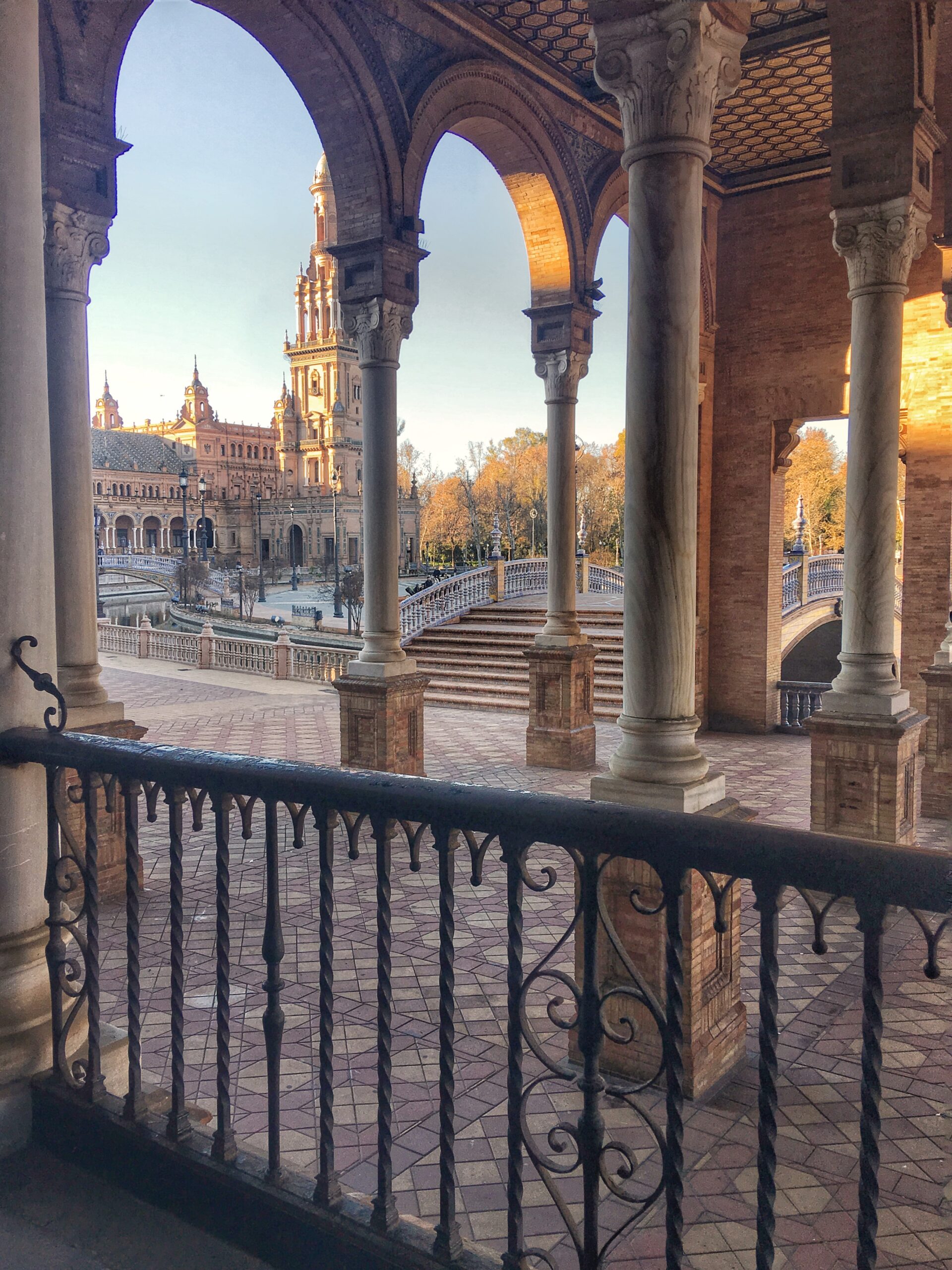
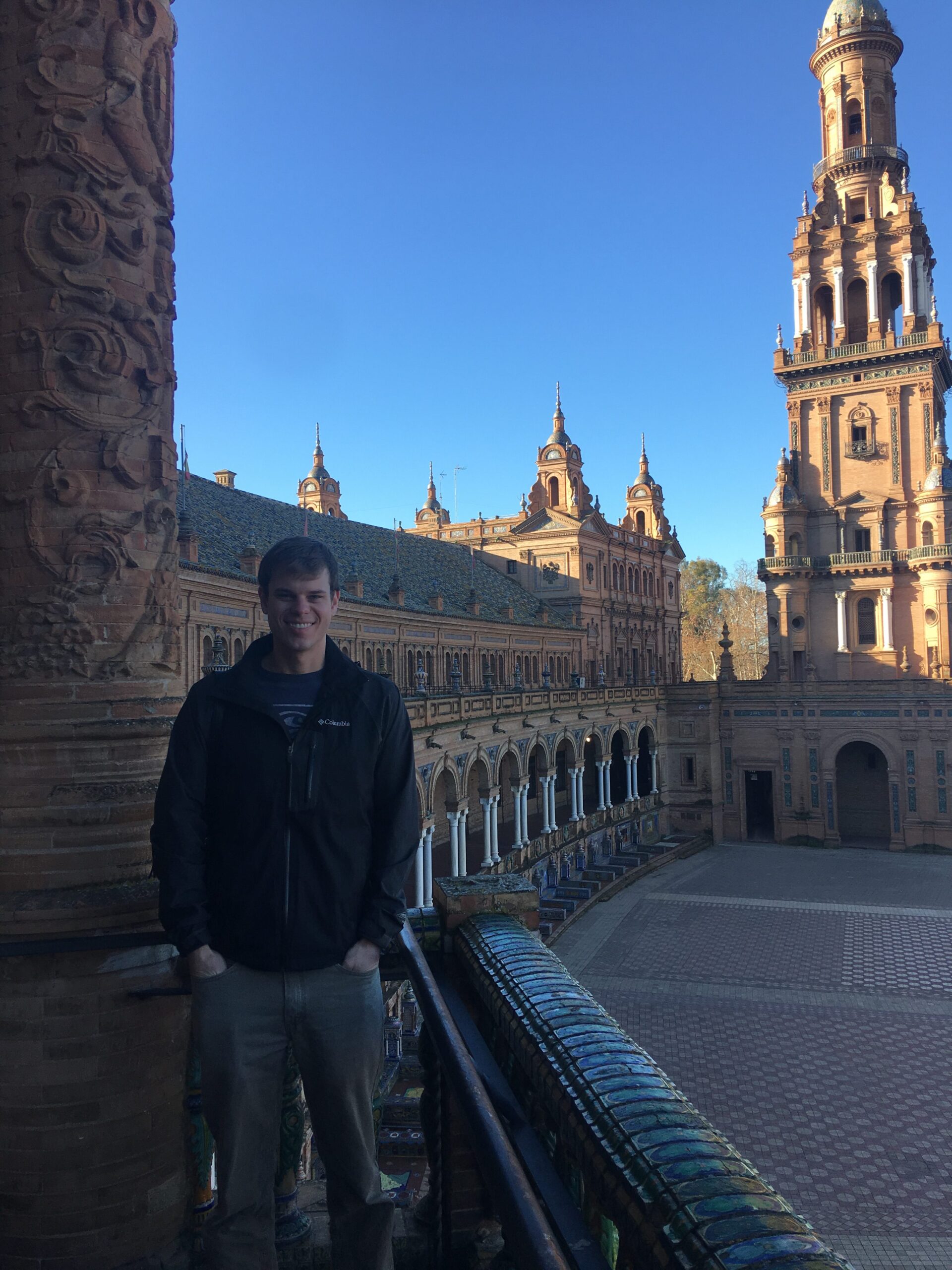
Seville Cathedral
Visit the Seville Cathedral and walk up the 34 ramps to the top of the Giralda bell tower. Rumor has it, the ramps inside the bell tower were built instead of stairways so that Muezzin (who led the call to prayer) could ride his horse to the top of the tower. The views from the top of the bell tower are stunning. We had a fun time gazing down on the cobblestone streets, horse-drawn carriages, and the various rooftop lounges and bars that dot the city.
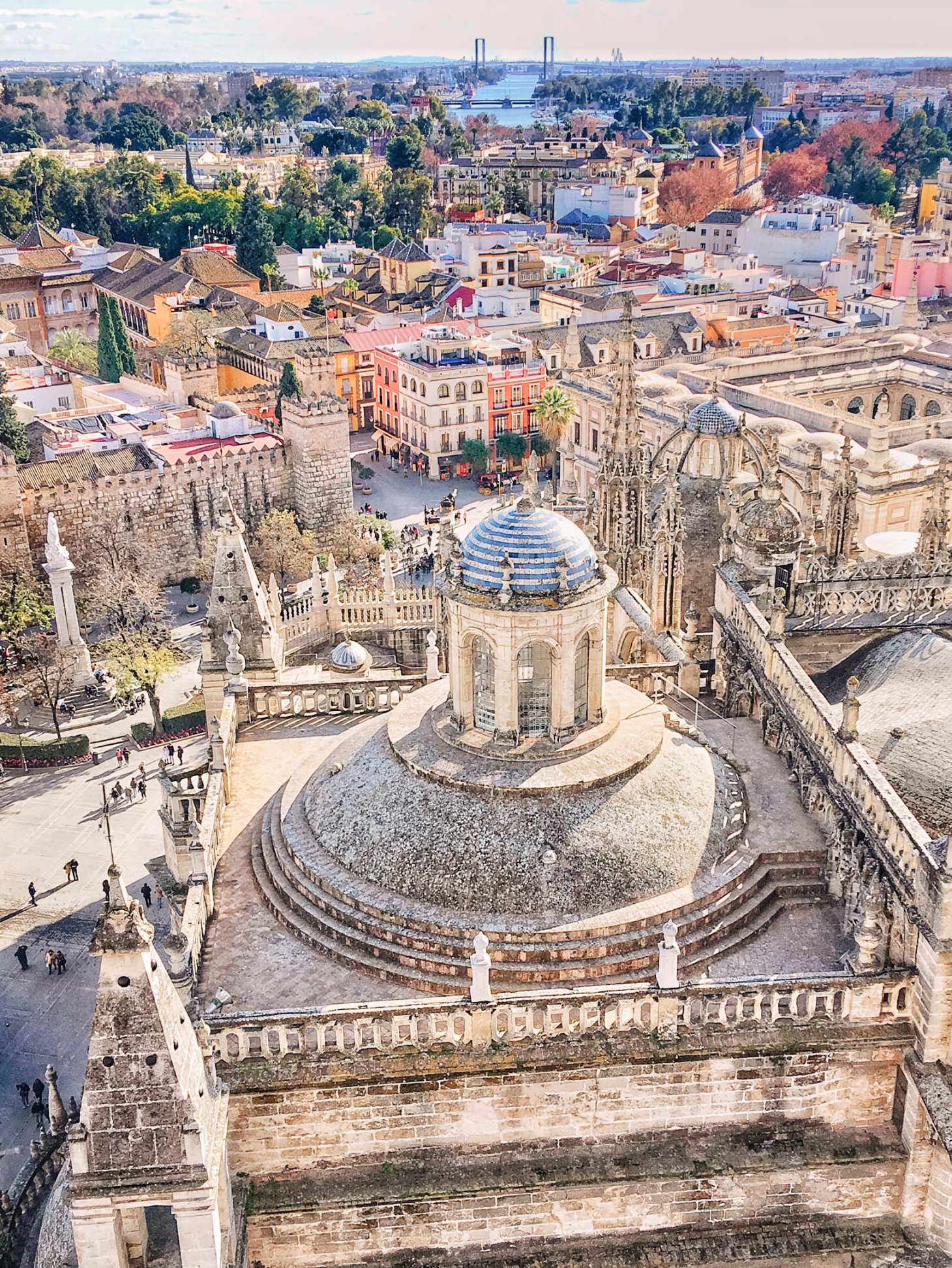
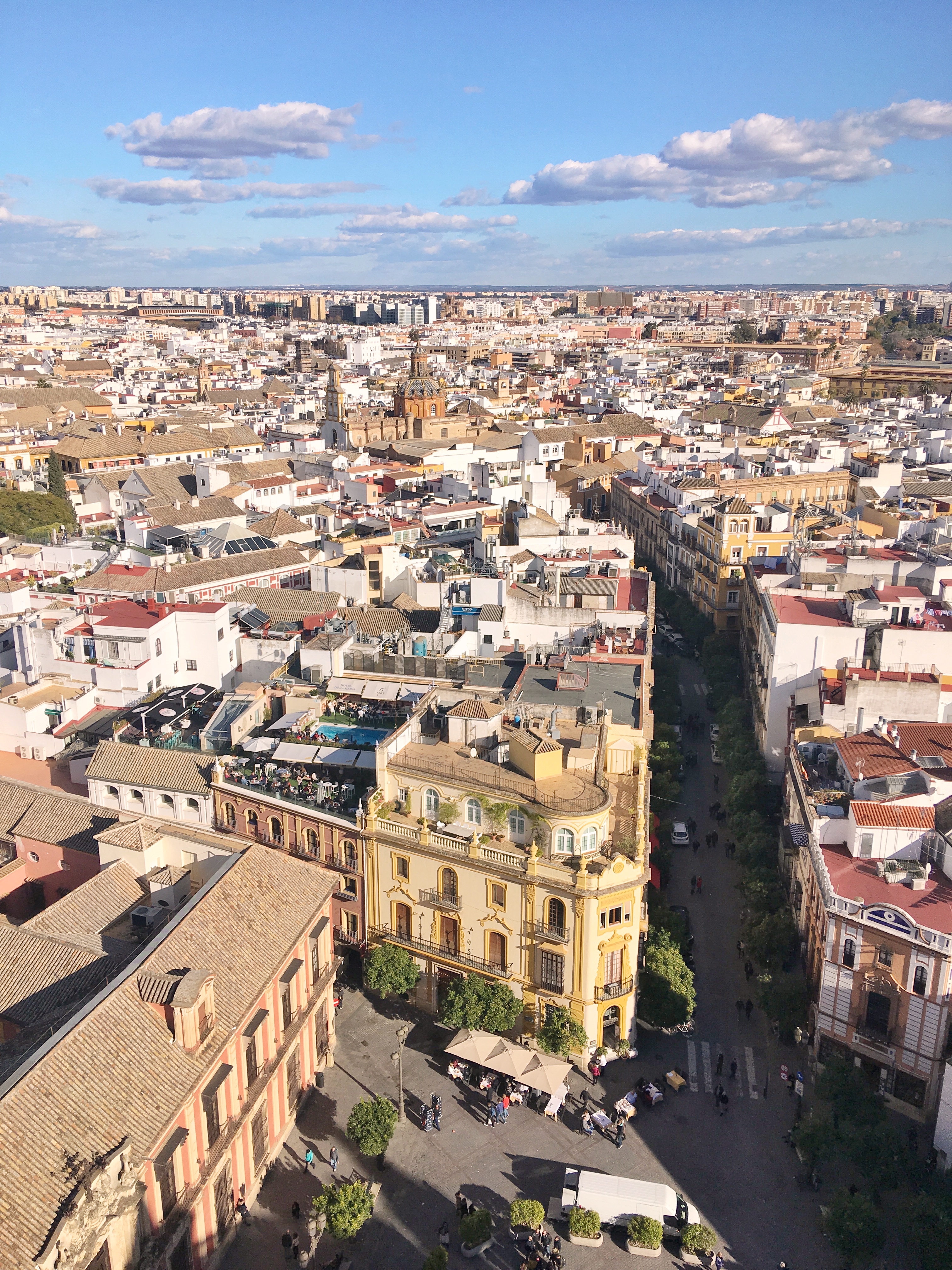
The Seville Cathedral is an UNESCO World Heritage site and is most famous for housing the tomb of Christopher Columbus. There are several cities (for example, Havana or Santo Domingo) who claim a similar ‘fact’, but DNA tests have proven that Seville actually houses the remains of the world-famous explorer.
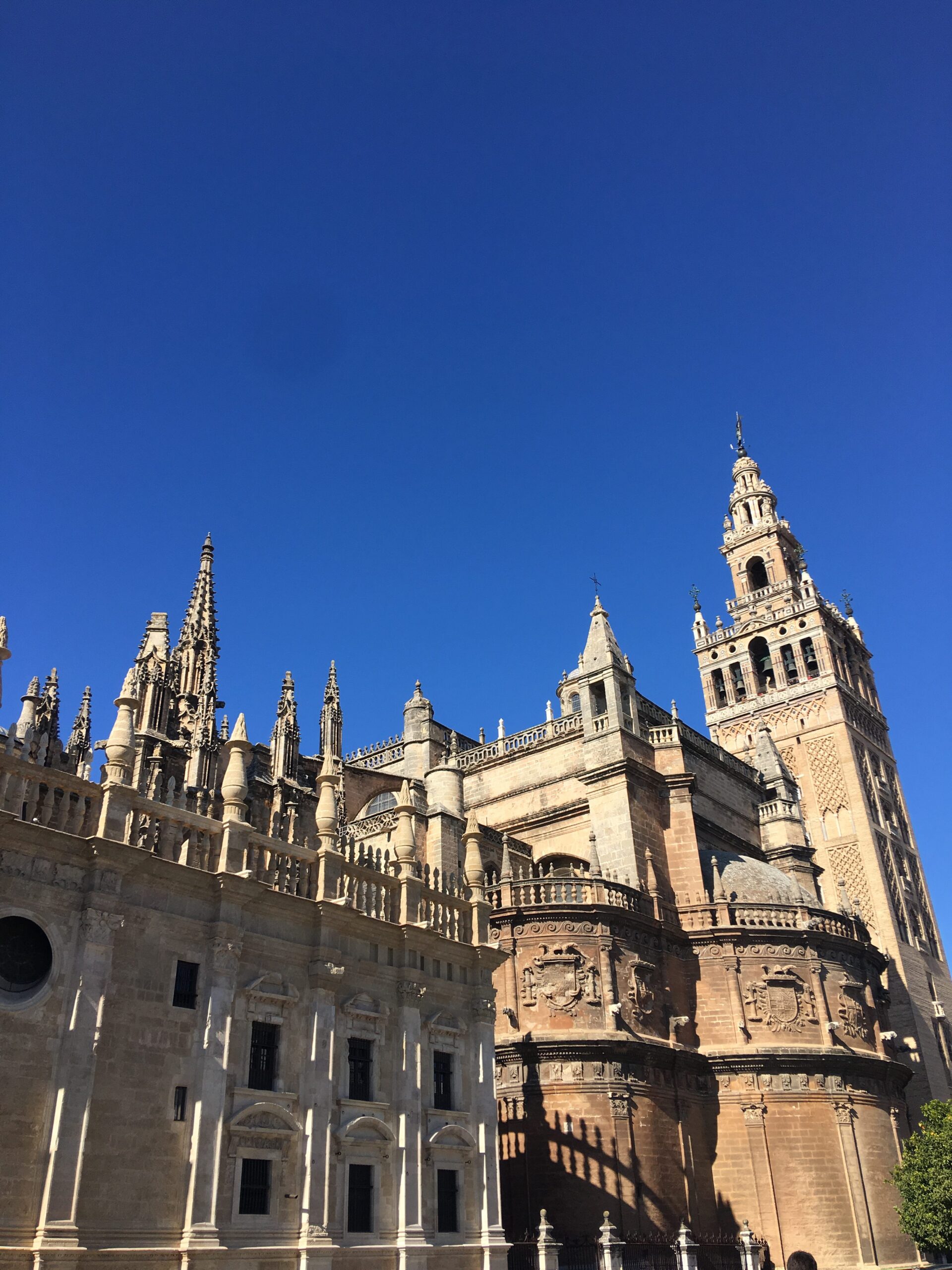
Afternoon Siesta
Take an afternoon siesta. Do as the locals do, and take a nap. Did you know? The traditional reason for the Spanish ‘siesta’ is because workers needed to take shelter and rest from the sweltering afternoon heat. The workers would then (feeling re-energized from a nap, and the heat then subsided) continue their work into the late evenings.
Santa Cruz
Roam the streets of Santa Cruz, with it’s hidden squares and winding streets. Santa Cruz is the primary tourist neighborhood in Seville, featuring impossibly charming buildings and narrow streets lined with orange trees. It’s the perfect place to wander aimlessly (while you’re doing that, you might discover a beautiful old church or two).
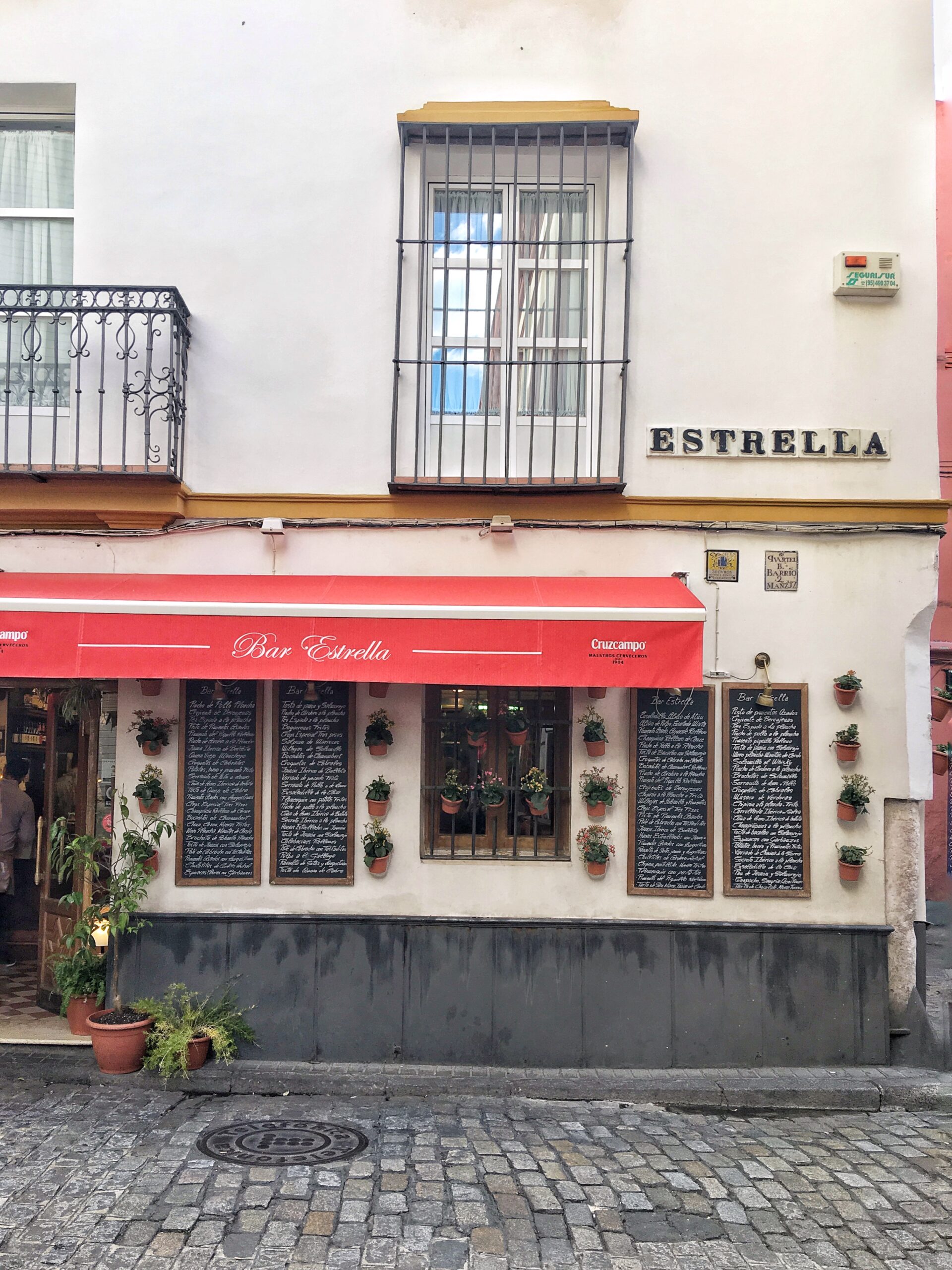
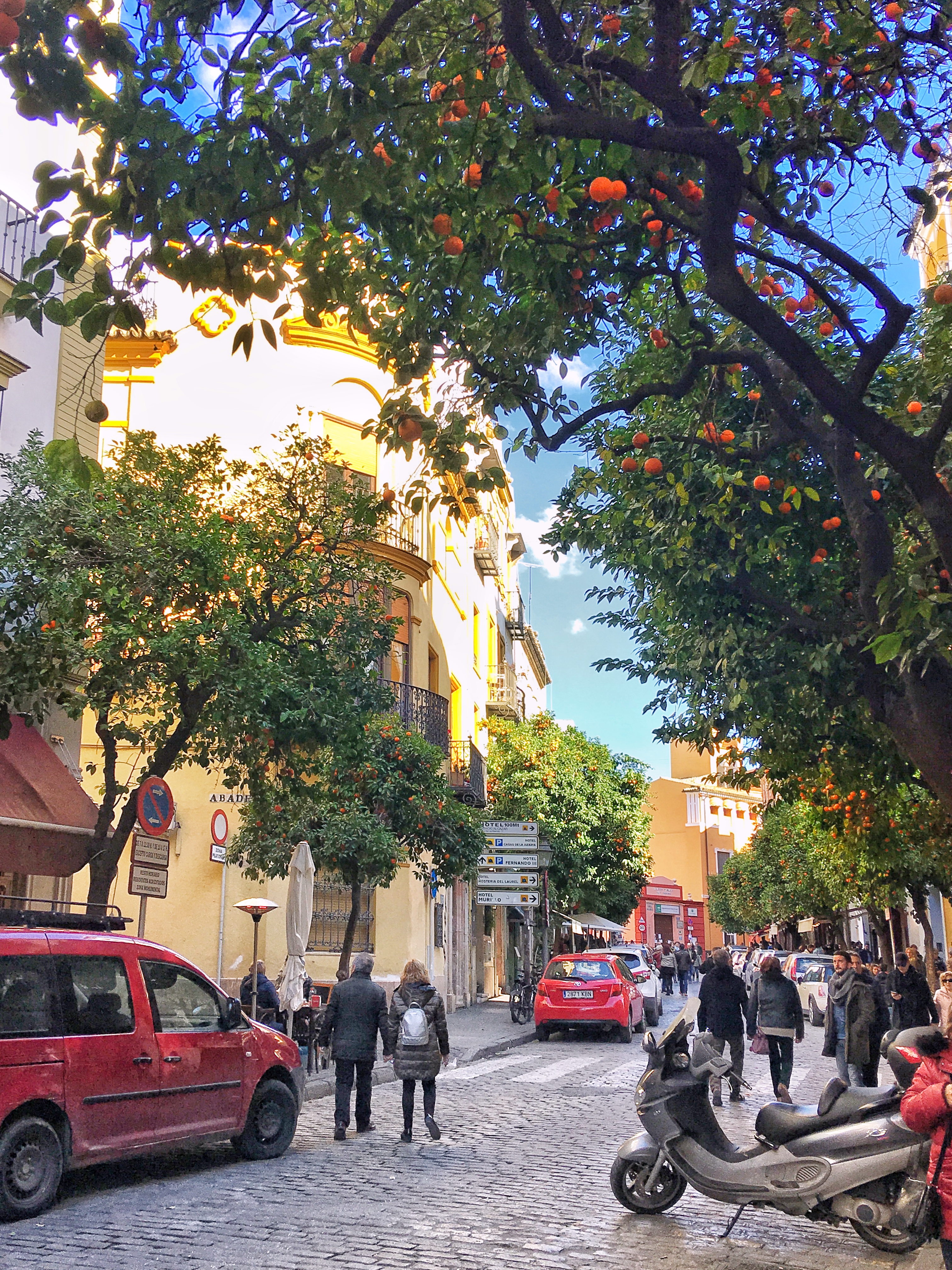
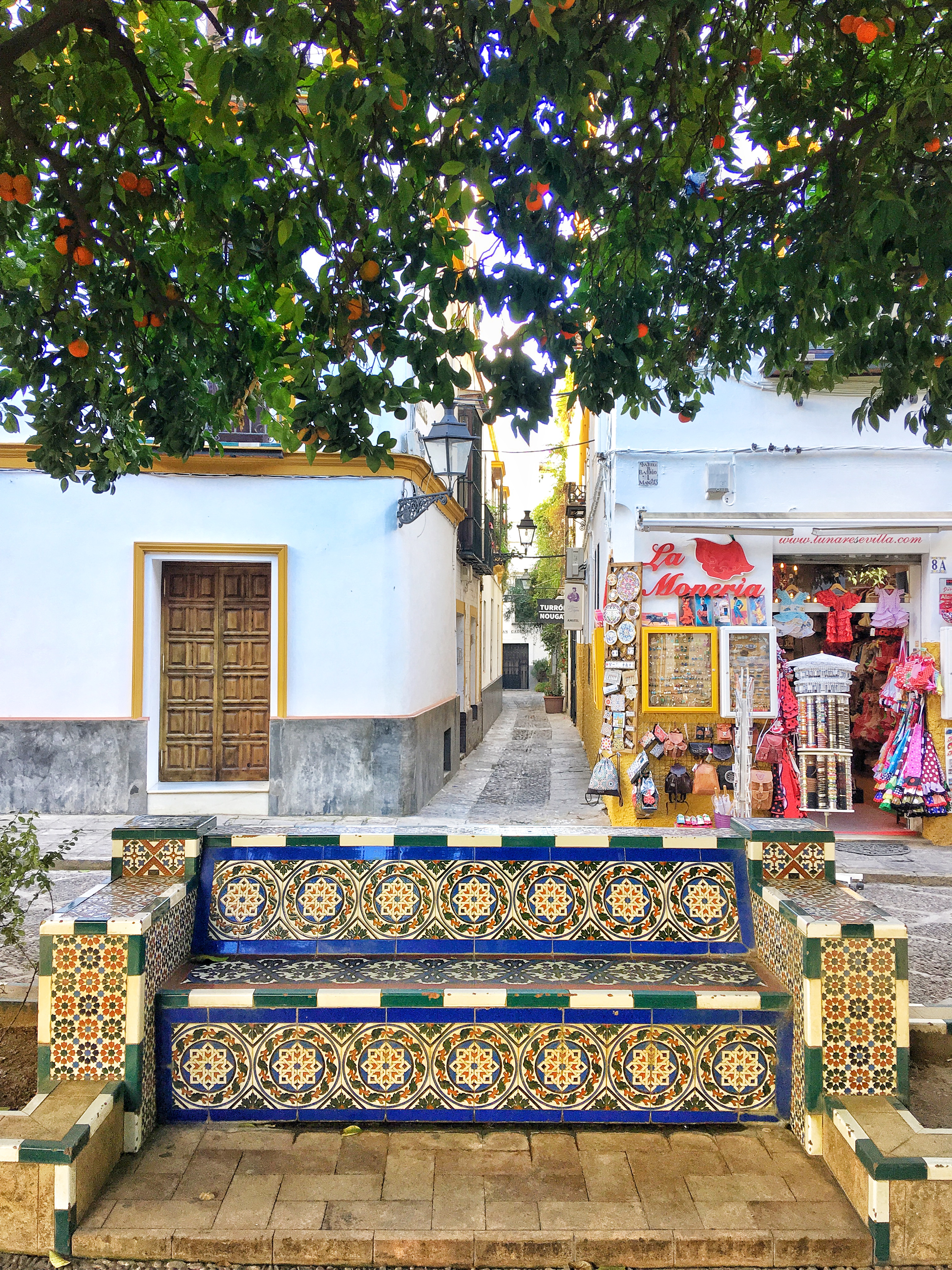
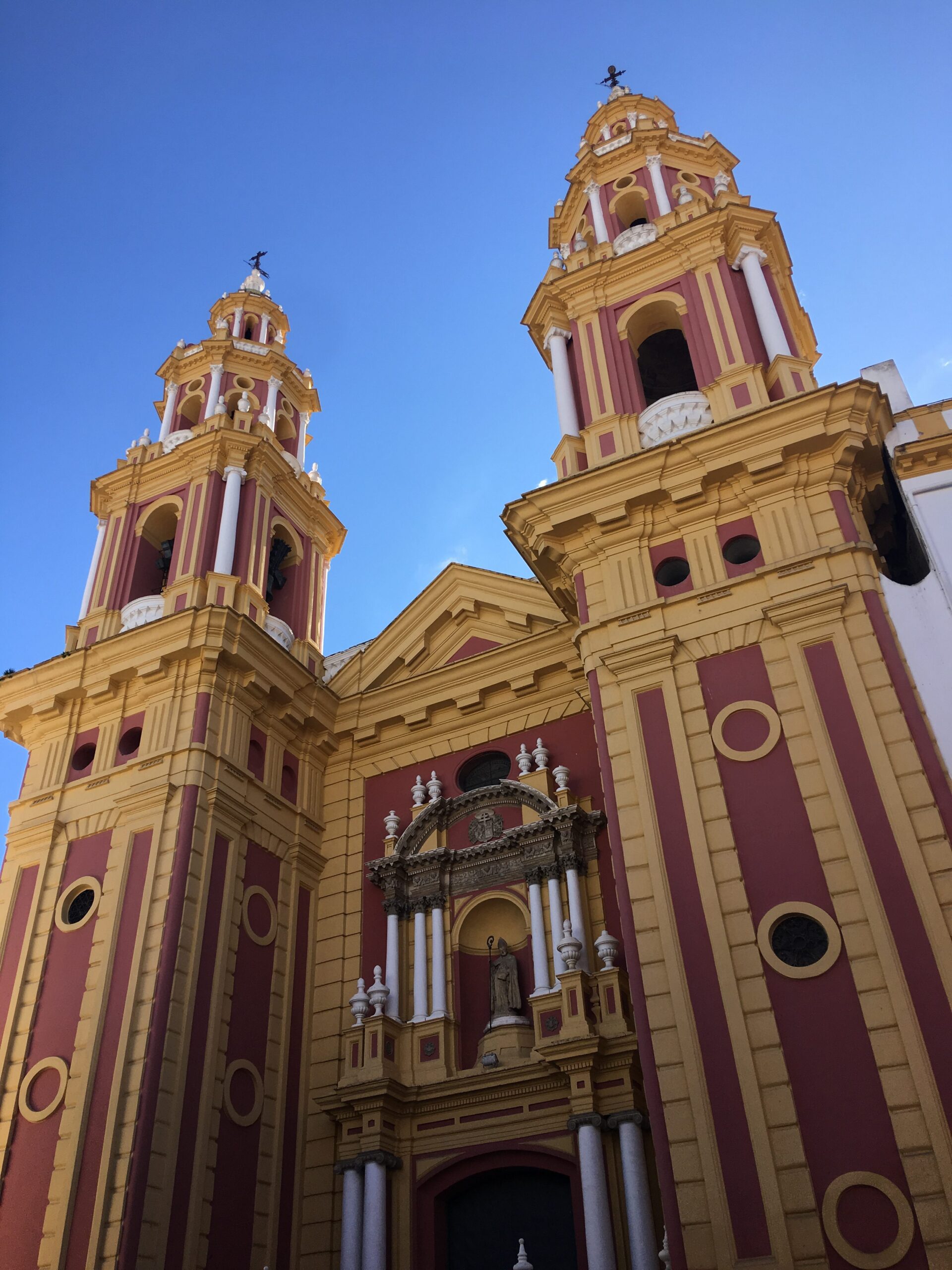
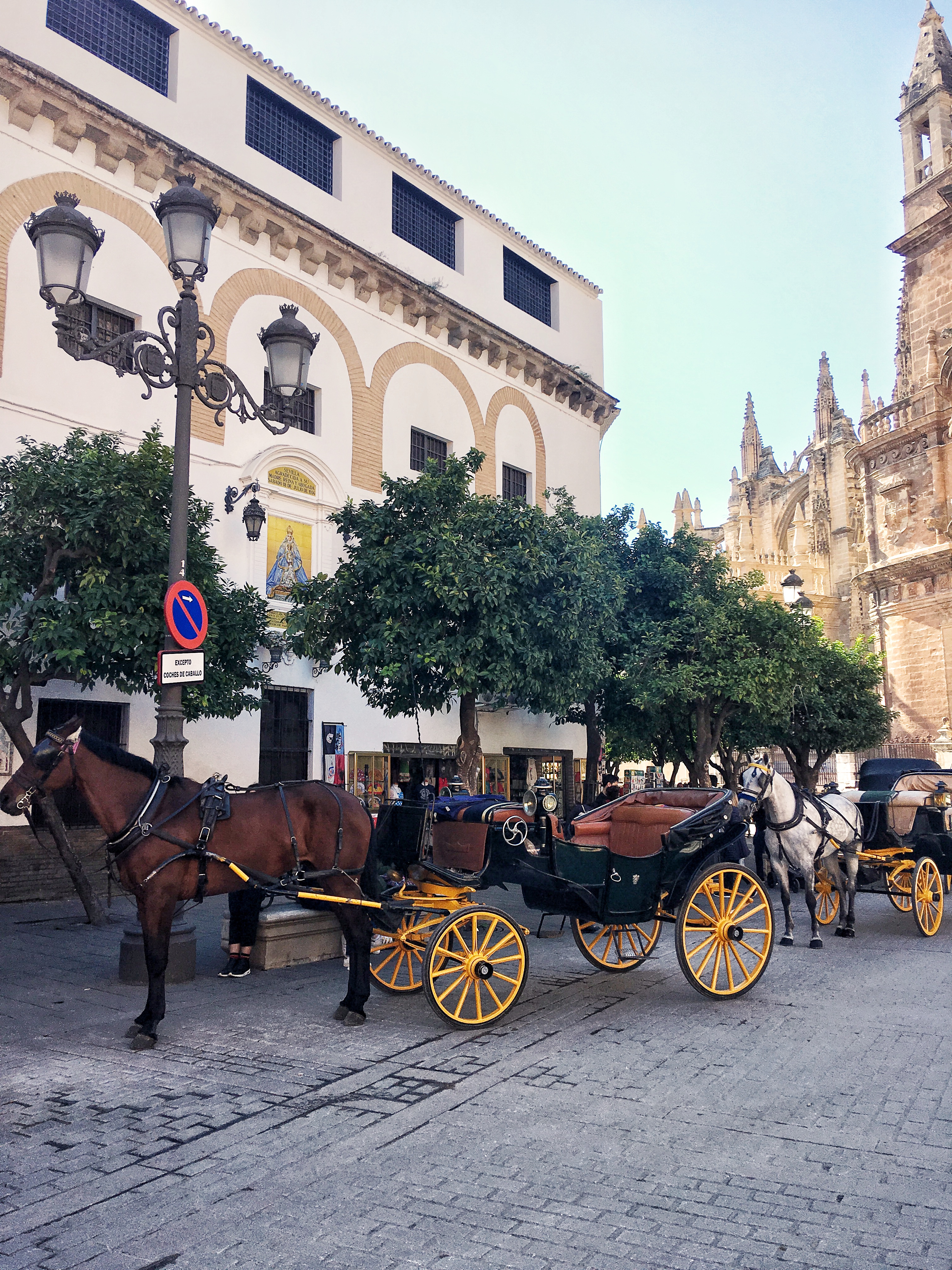
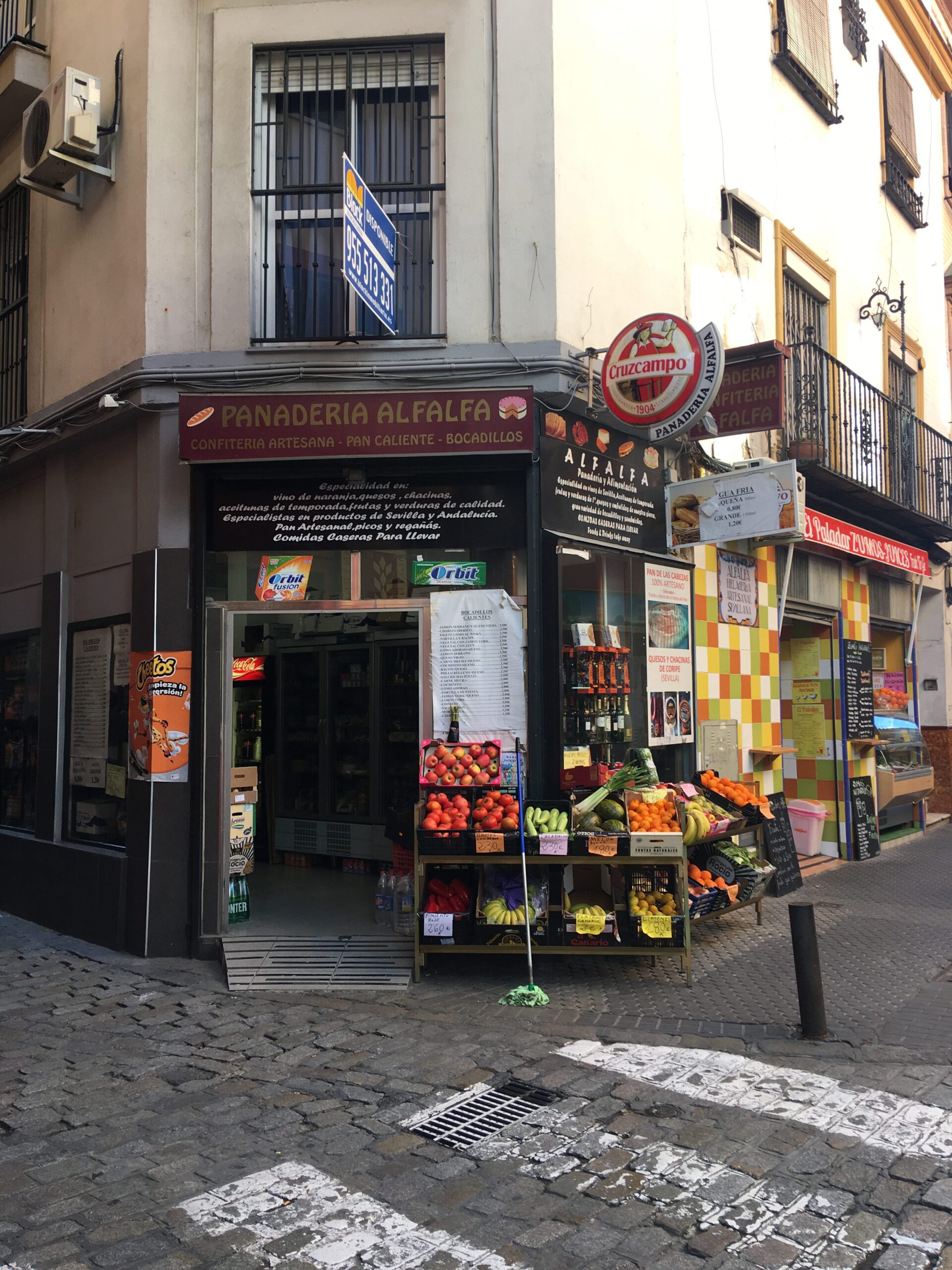
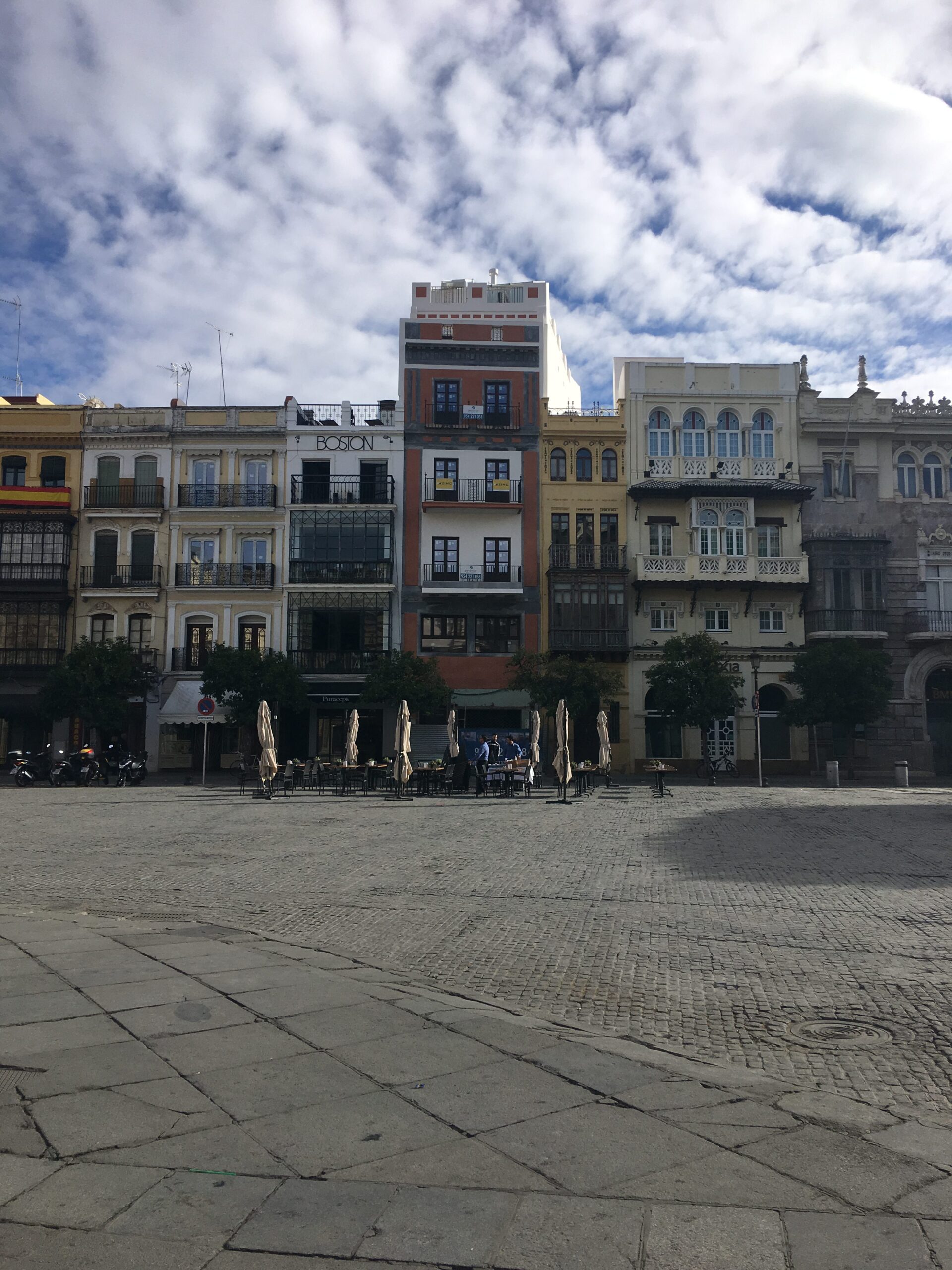
Flamenco
Appreciate local culture by attending a traditional flamenco show. Seville is known to be the ‘birthplace’ of flamenco dancing. Thanks to the tourism industry, the tradition is still alive-and-well in the city. There are several places to choose from, and most venues offer dinner with the show. But wait! Skip these dinner show packages and head to La Casa del Flamenco for a more intimate, and traditional flamenco experience. Prices are very reasonable (18 Euros per ticket) and you can book easily online.
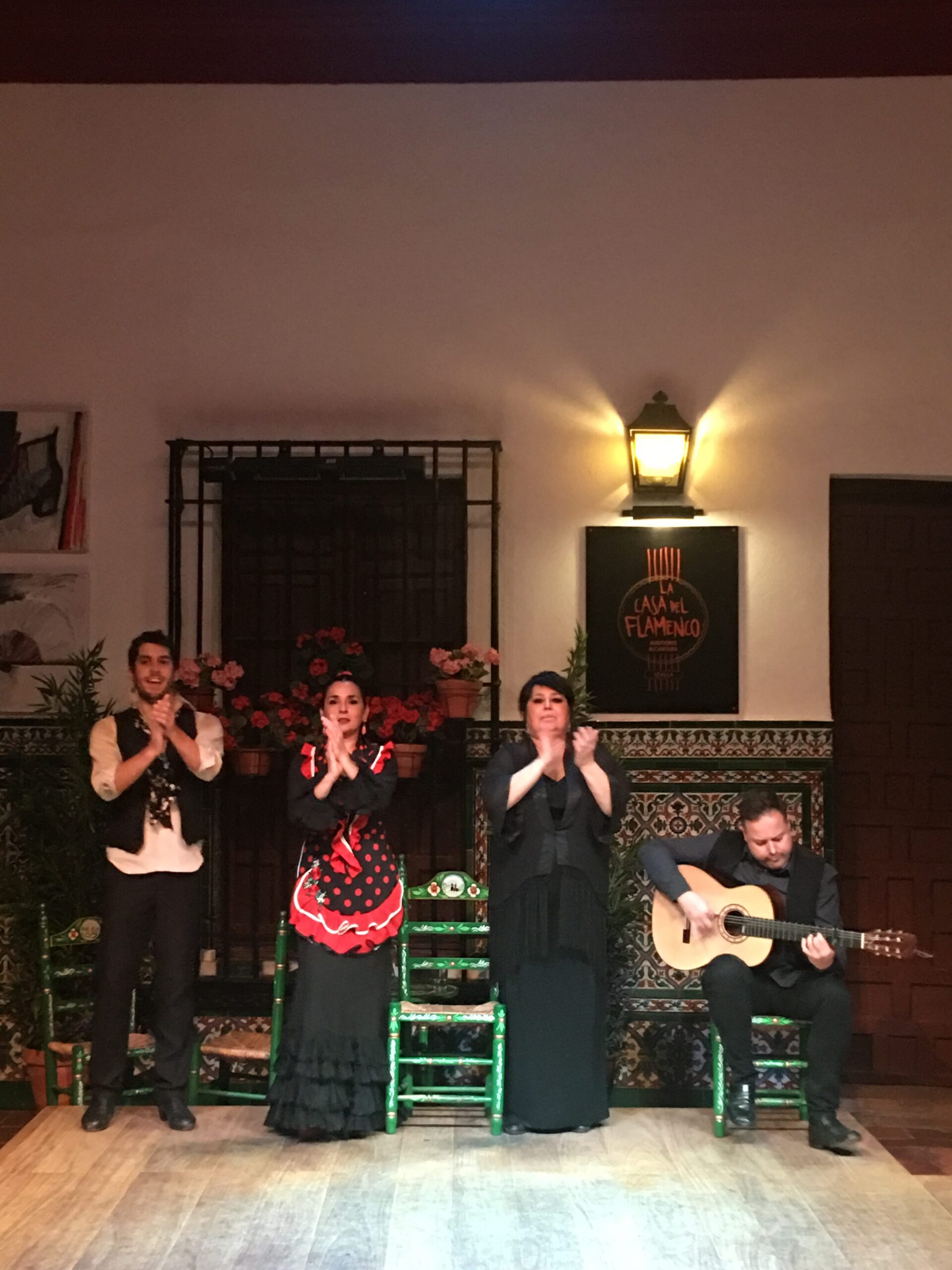
La Casa del Flamenco is held in a small venue, a lovely Spanish-style courtyard. There are no amps or microphones, as the owners think it’s important to showcase the natural acoustics and power of the dancers involved. There are 2 shows performed every night, each lasting an hour. The show was magnificent. We were absolutely captivated by the passion and movement of the dancers. And after the show, as we were meandering the streets of Santa Cruz on the hunt for our next tapas bar, I couldn’t help but want to kick-up my heels, and shout Ole!
Triana
Wander the old quarter of Triana. Triana has a reputation for being Seville’s most colorful gypsy neighborhood. It used to be a place where bull fighters and flamenco dancers would flock and cause quite the scene. Over time, it has evolved into an area where hipsters meet to enjoy quality bars and restaurants, buzzing markets, and riverside views.
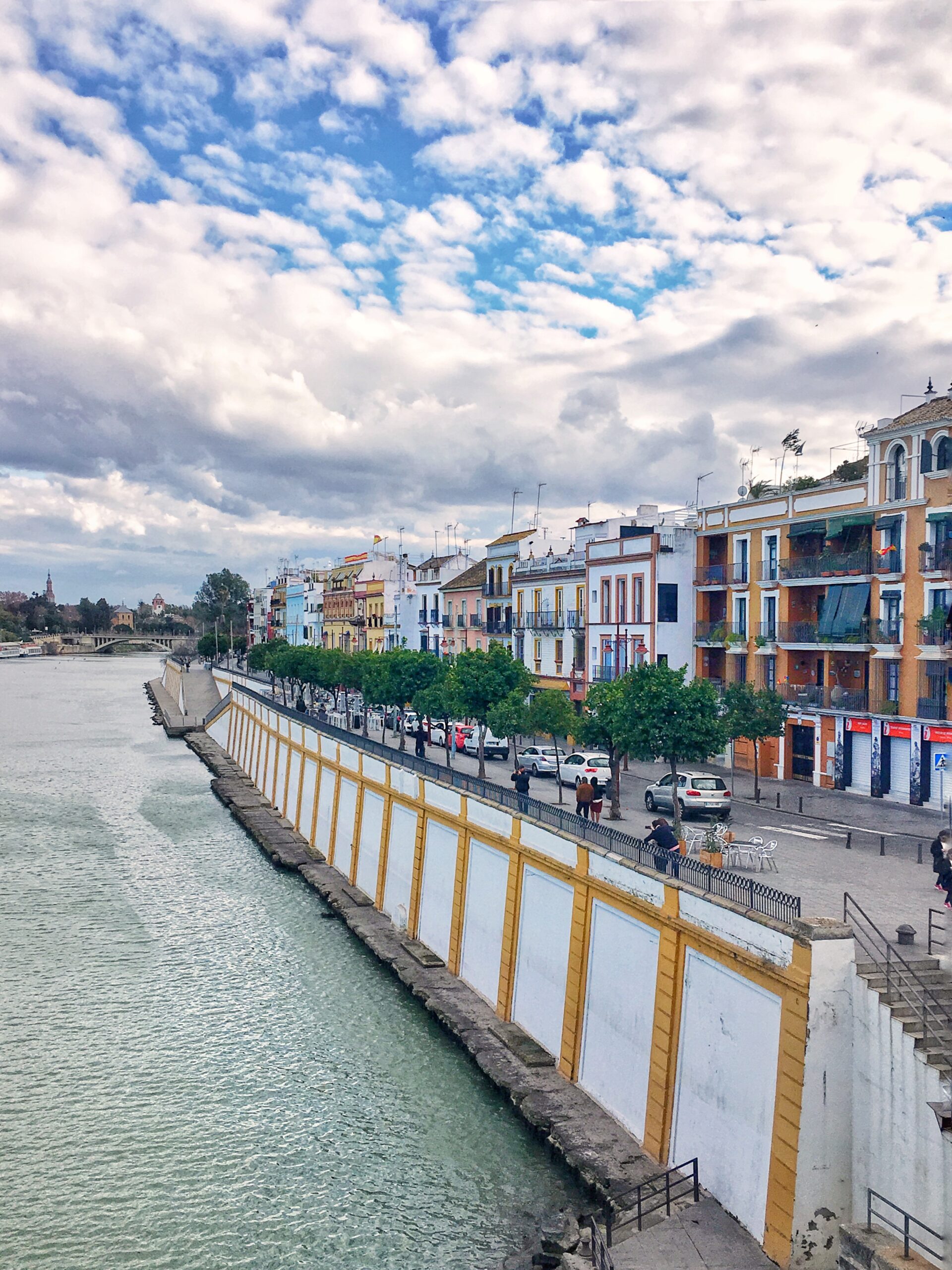
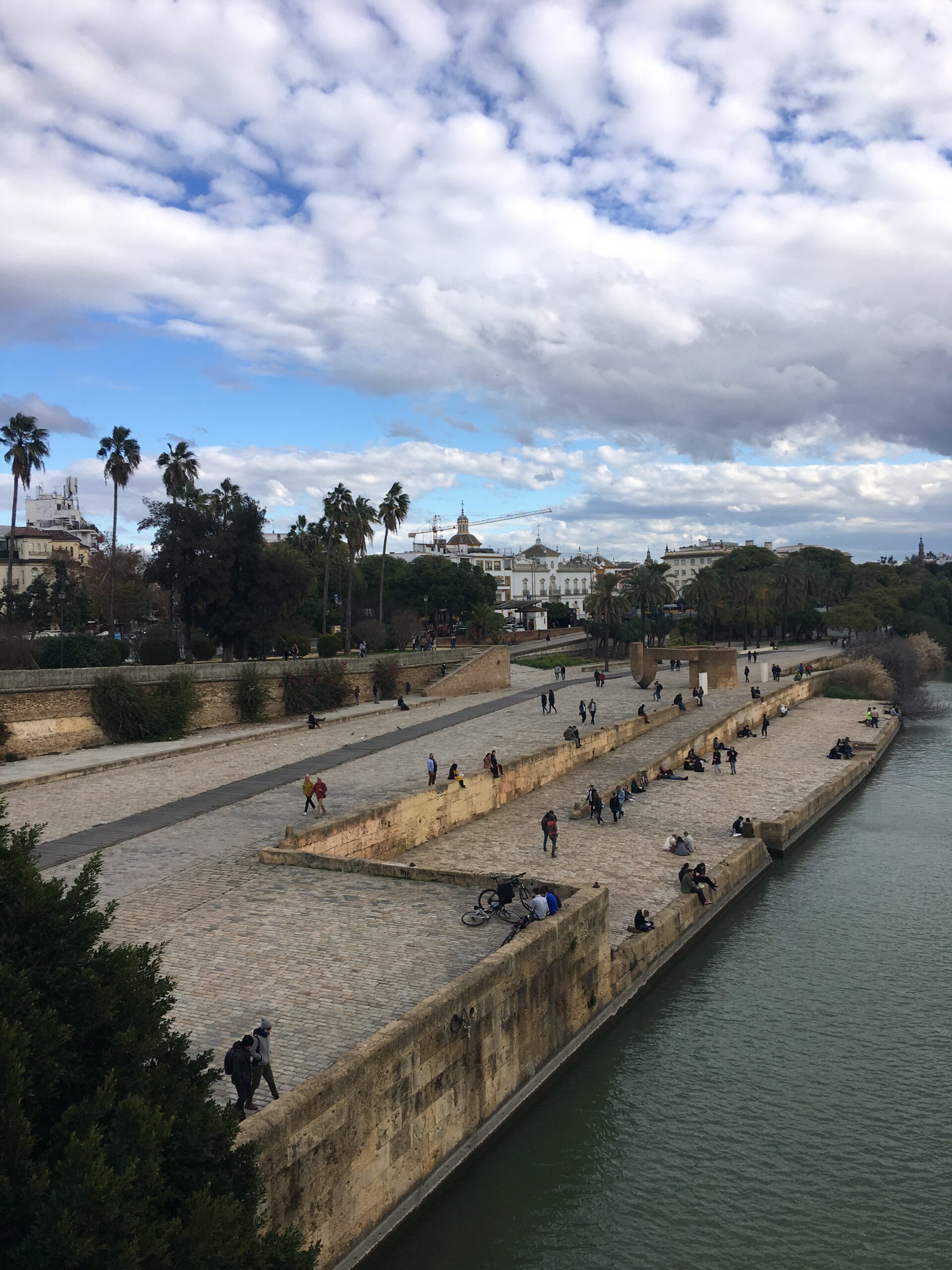
7- Eat tapas. And then eat more tapas. The food in Seville was so good, it deserved it’s own post. Find out ‘where to find the best tapas in Seville‘ and check out my related post here.
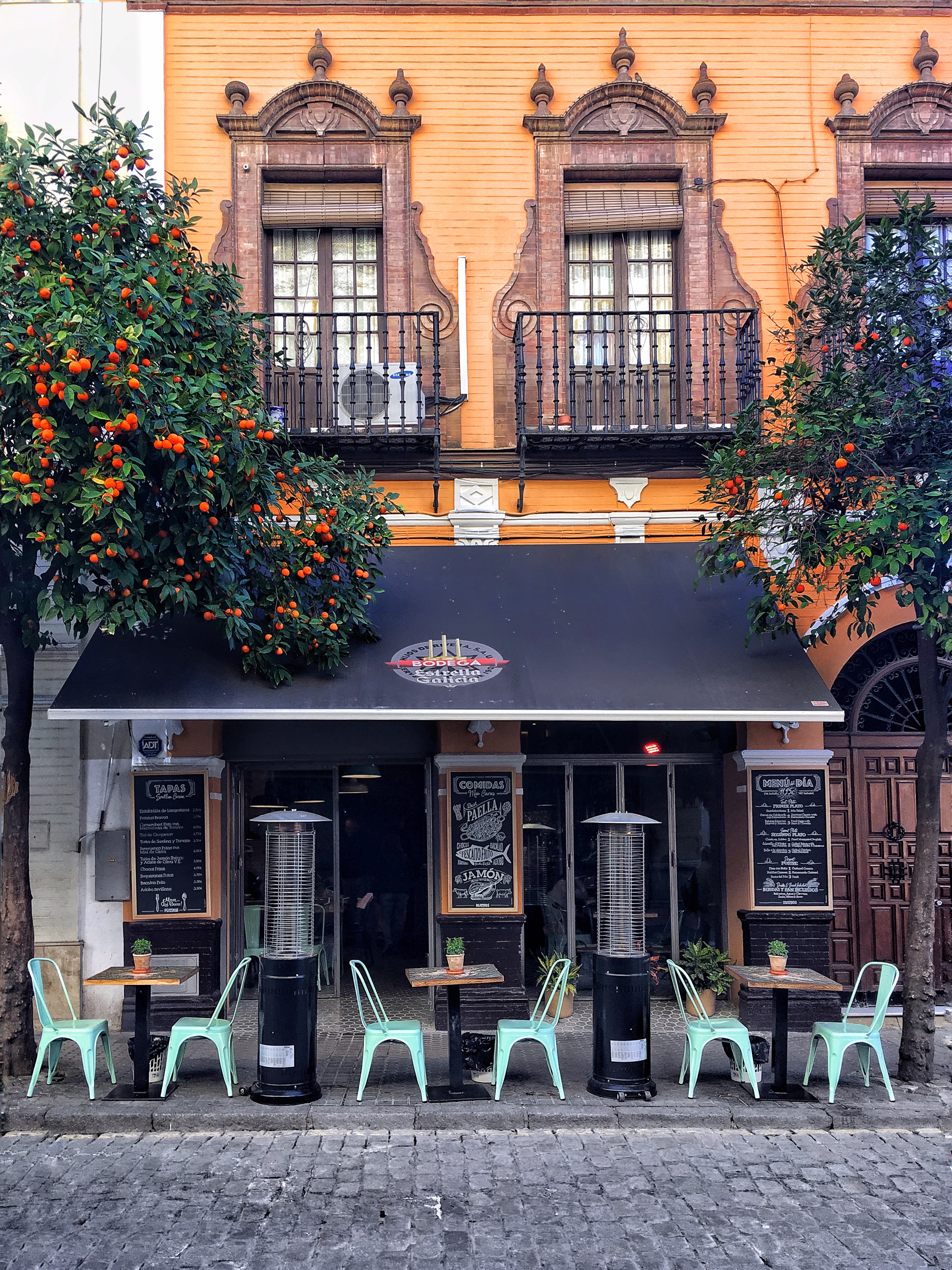
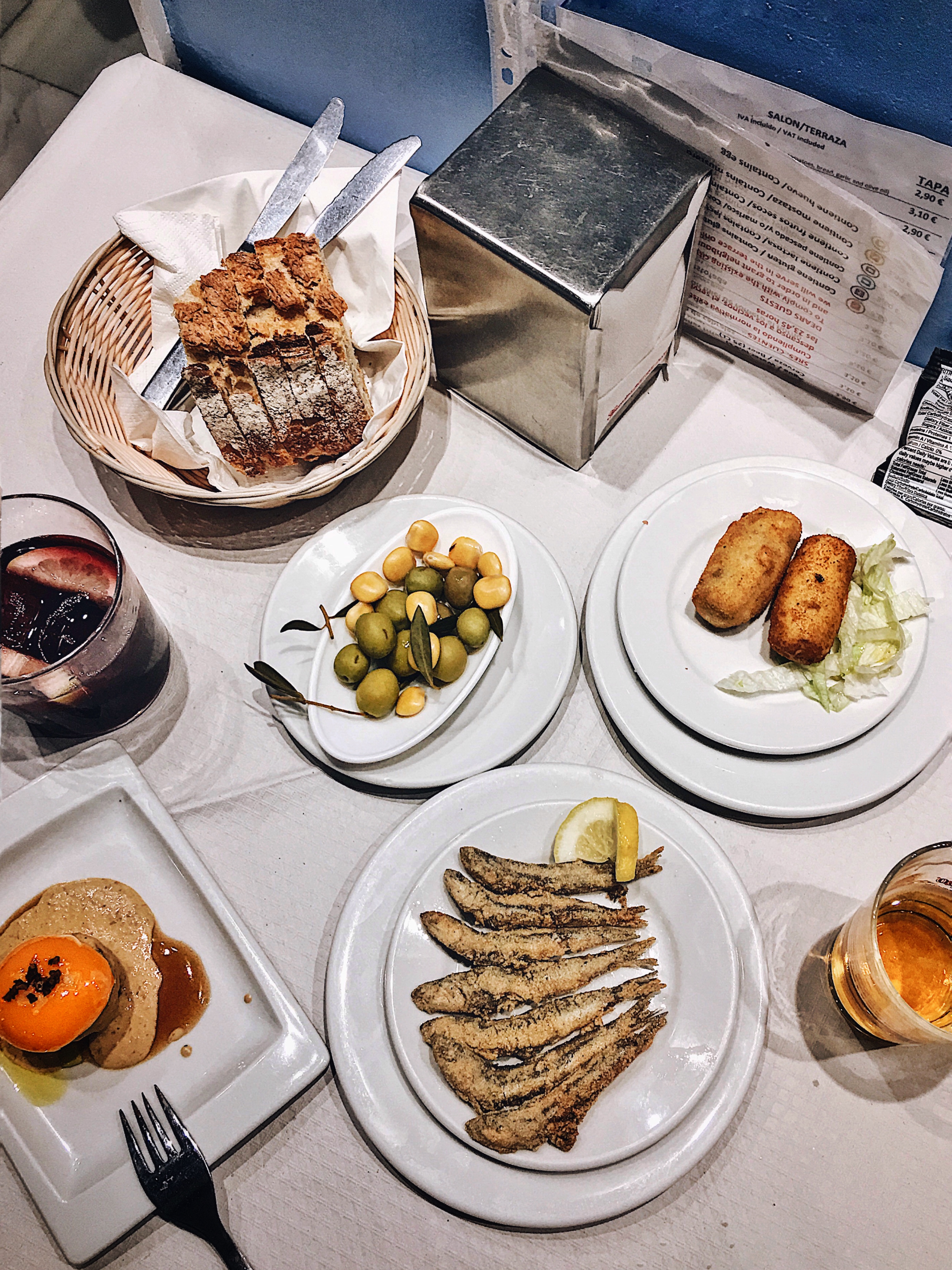
Metropol Parasol
Climb to the top of Metropol Parasol and enjoy amazing views of the city. I’ll be honest, the Metropol Parasol is not the prettiest structure I’ve seen (it kind of looks like a dilapidated giant mushroom?), but it’s a unique attraction that offers some great panoramic views. At around 85 feet high, the Metropol Parasol is claimed to be the largest wooden structure in the world. Apparently, the architect’s vision was to build a large shaded area so that the public could enjoy some respite from the hot, Spanish sun.
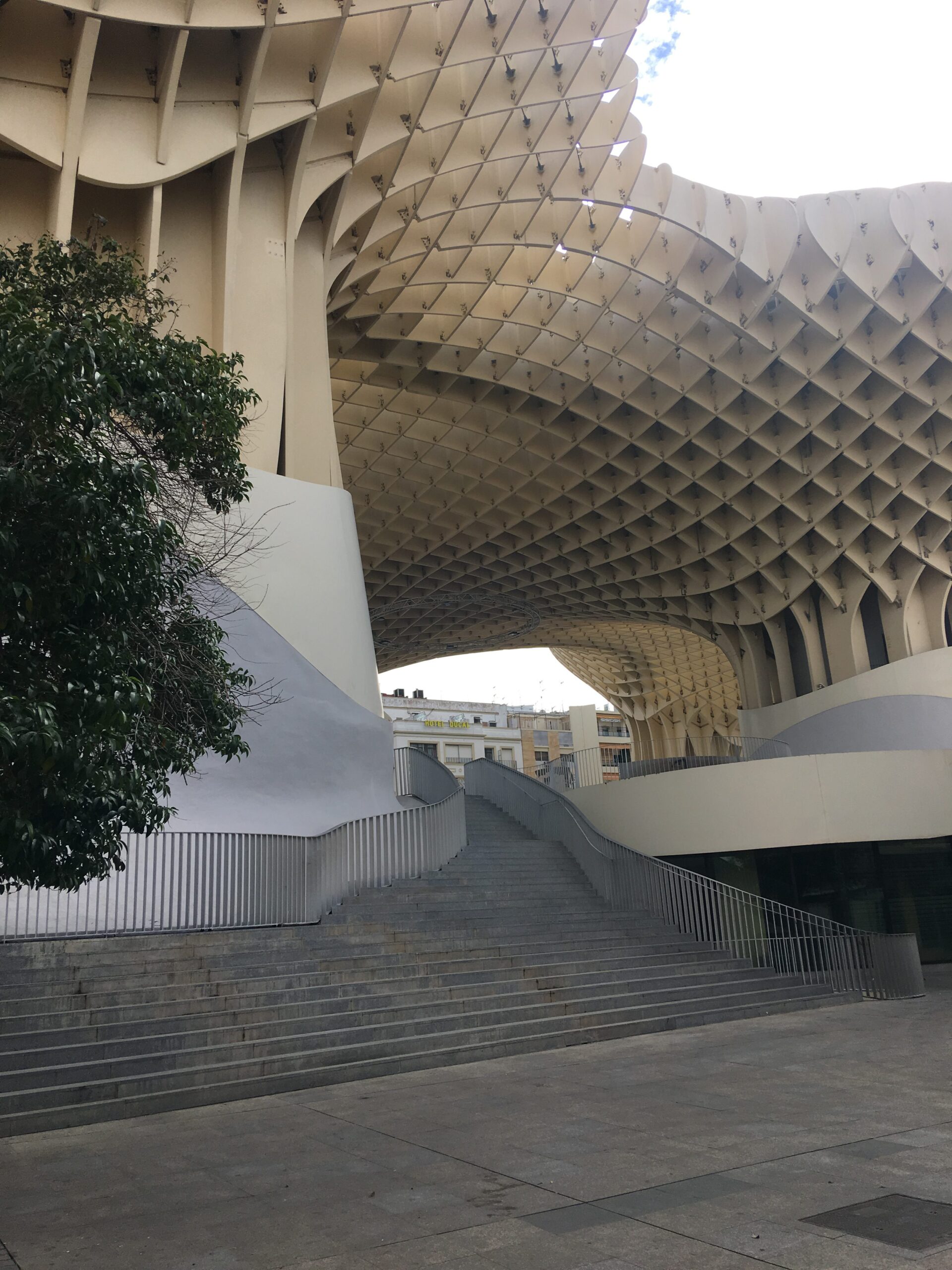
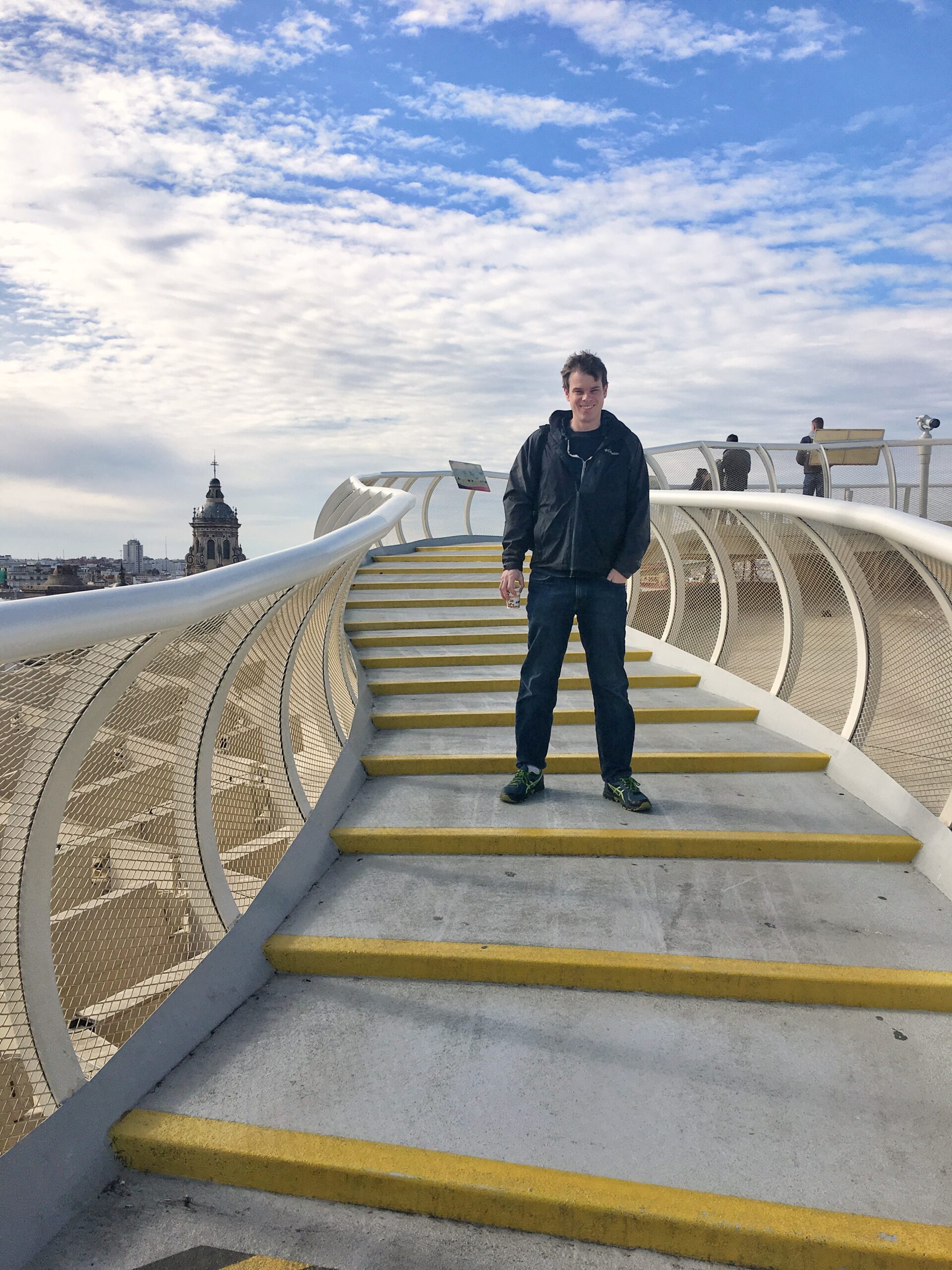
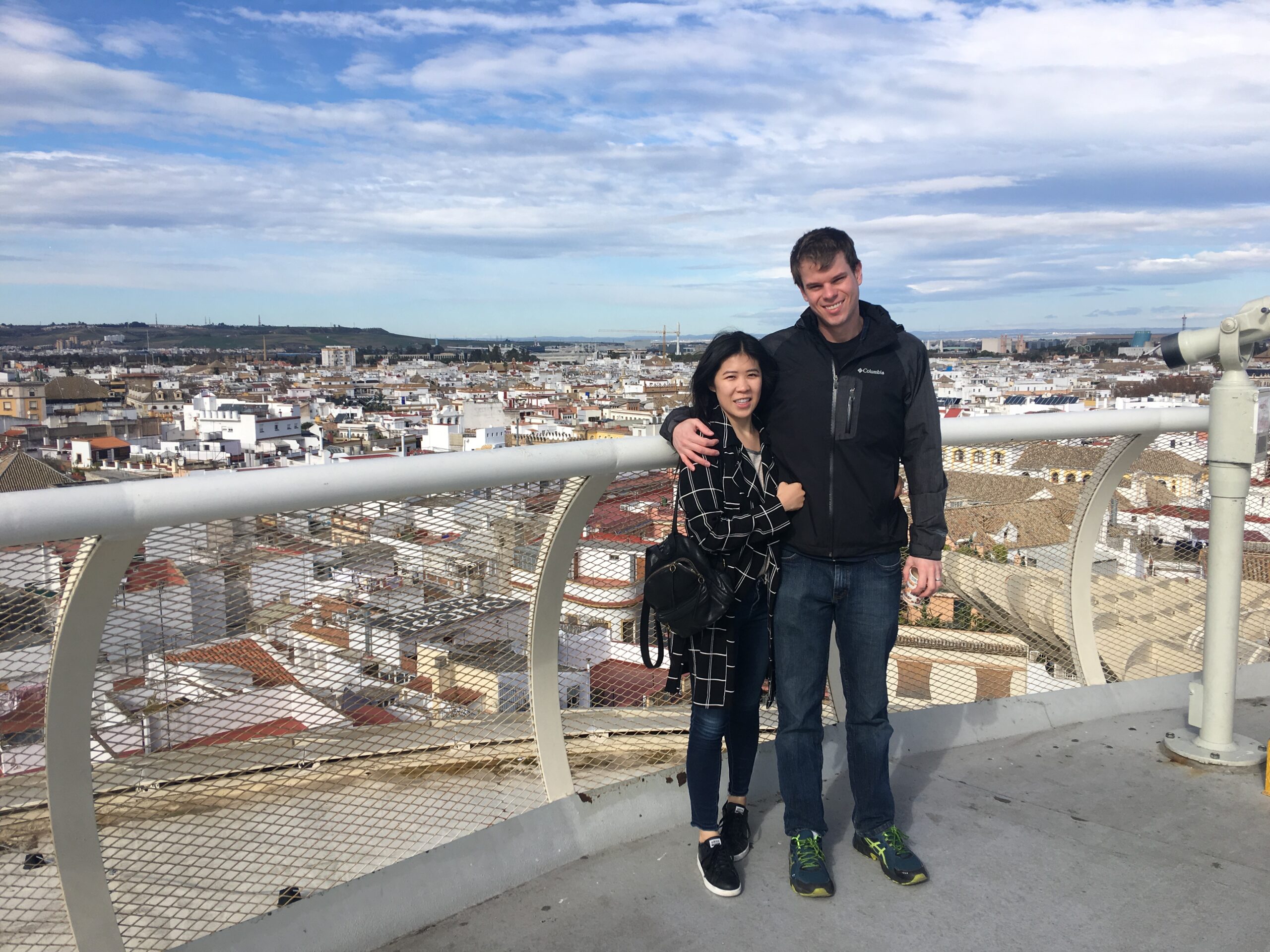
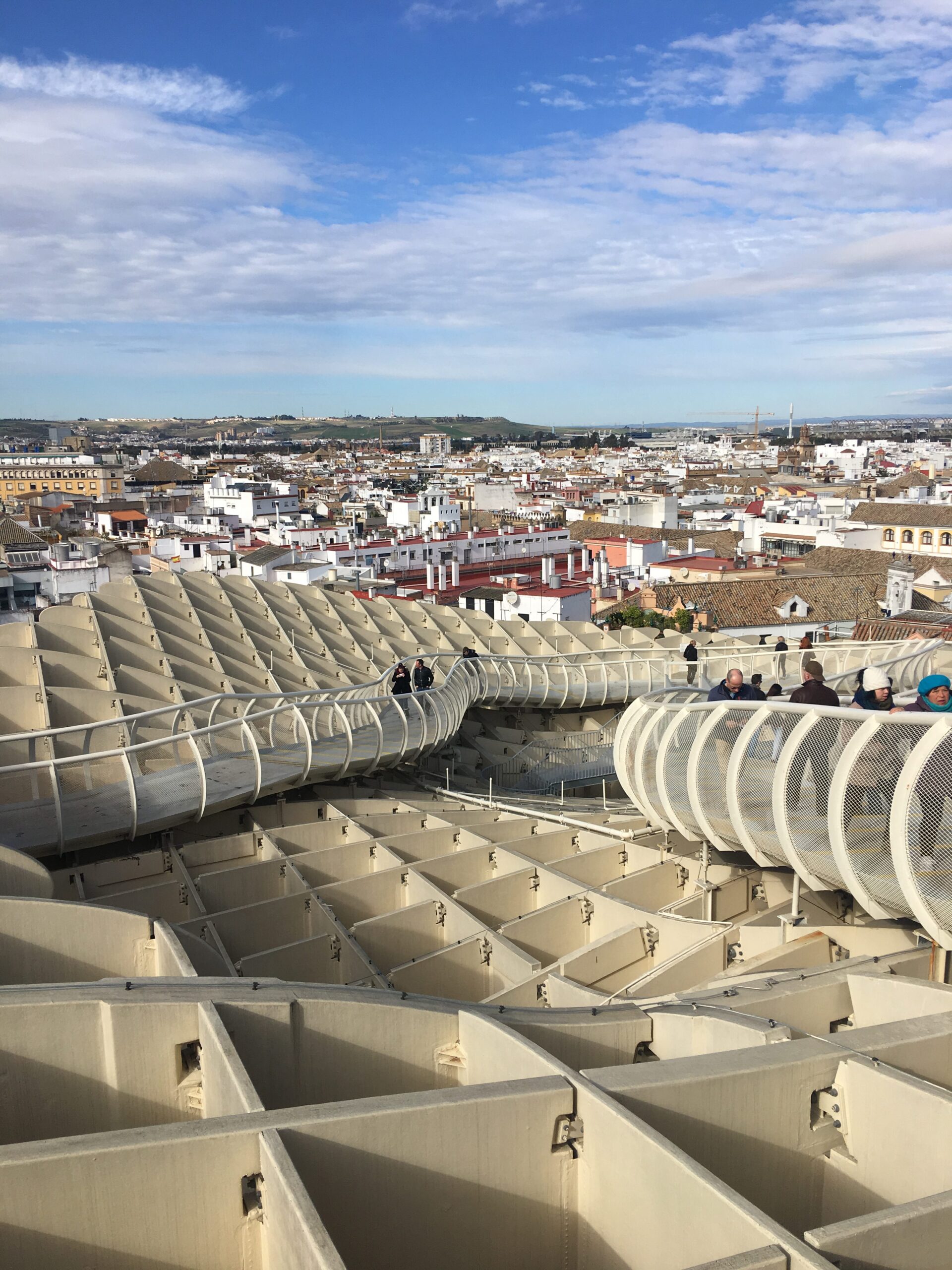
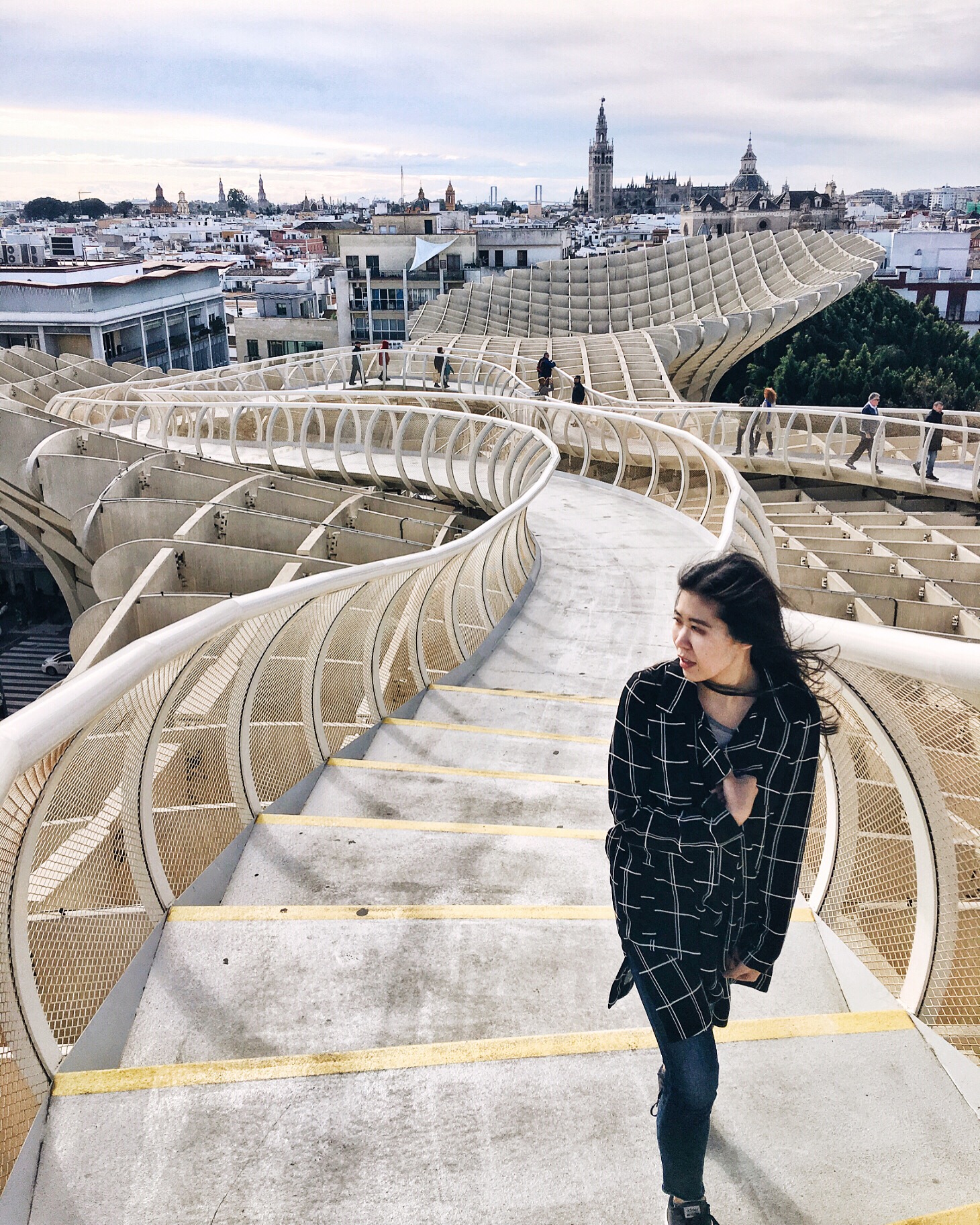
Real Alcazar
Channel your inner Khaleesi and visit the Real Alcazar, a UNESCO-listed palace complex. The Real Alcazar is famously known as the film site for the popular Game of Thrones HBO television series, and is owned by the royal family. The Real Alcazar was one of my favorite spots in Seville. Featuring lush gardens, shaded courtyards, and palaces decorated with the most intricate and colorful architectural details, it’s truly a site to behold and worth spending a few hours exploring!
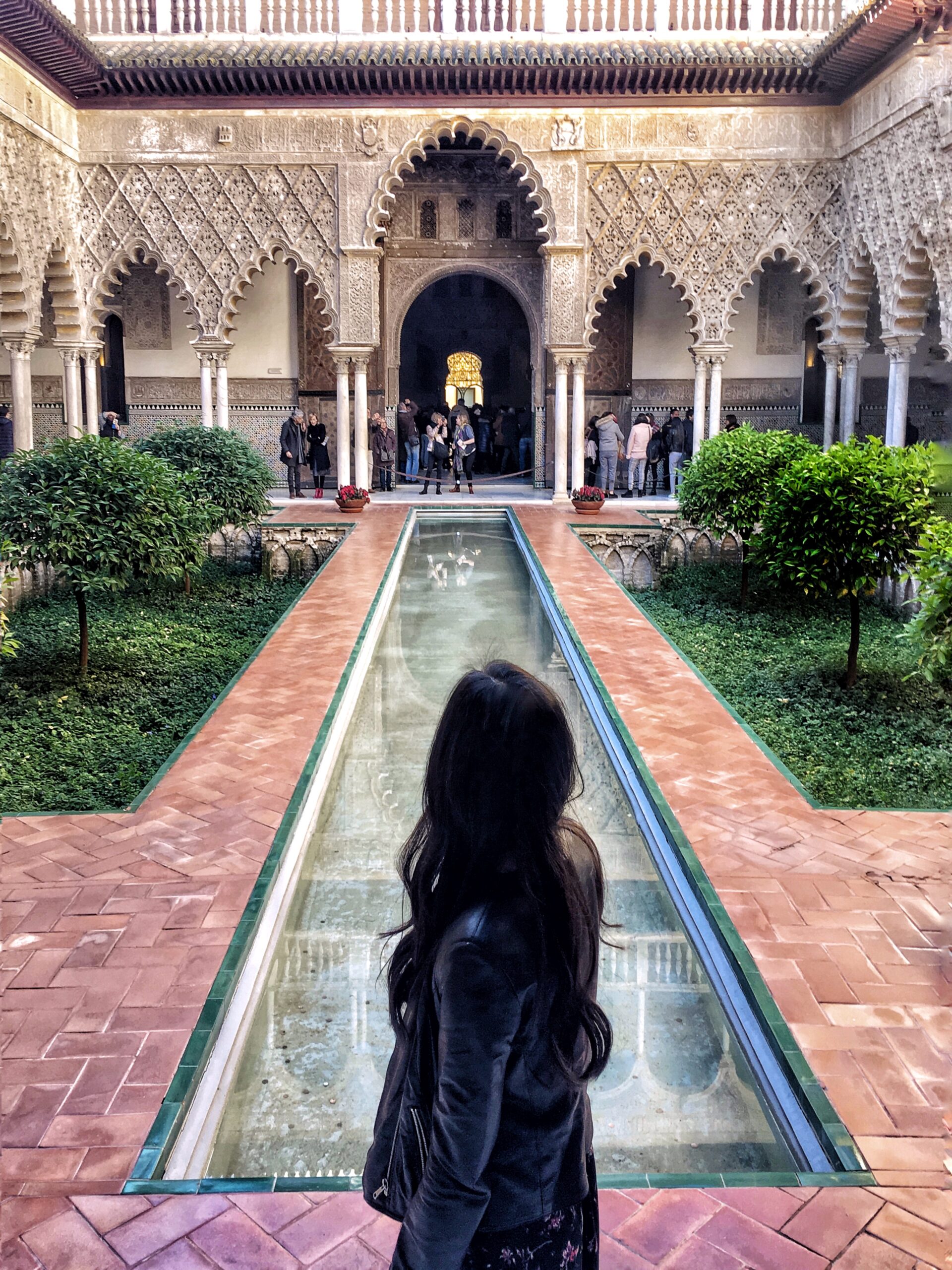
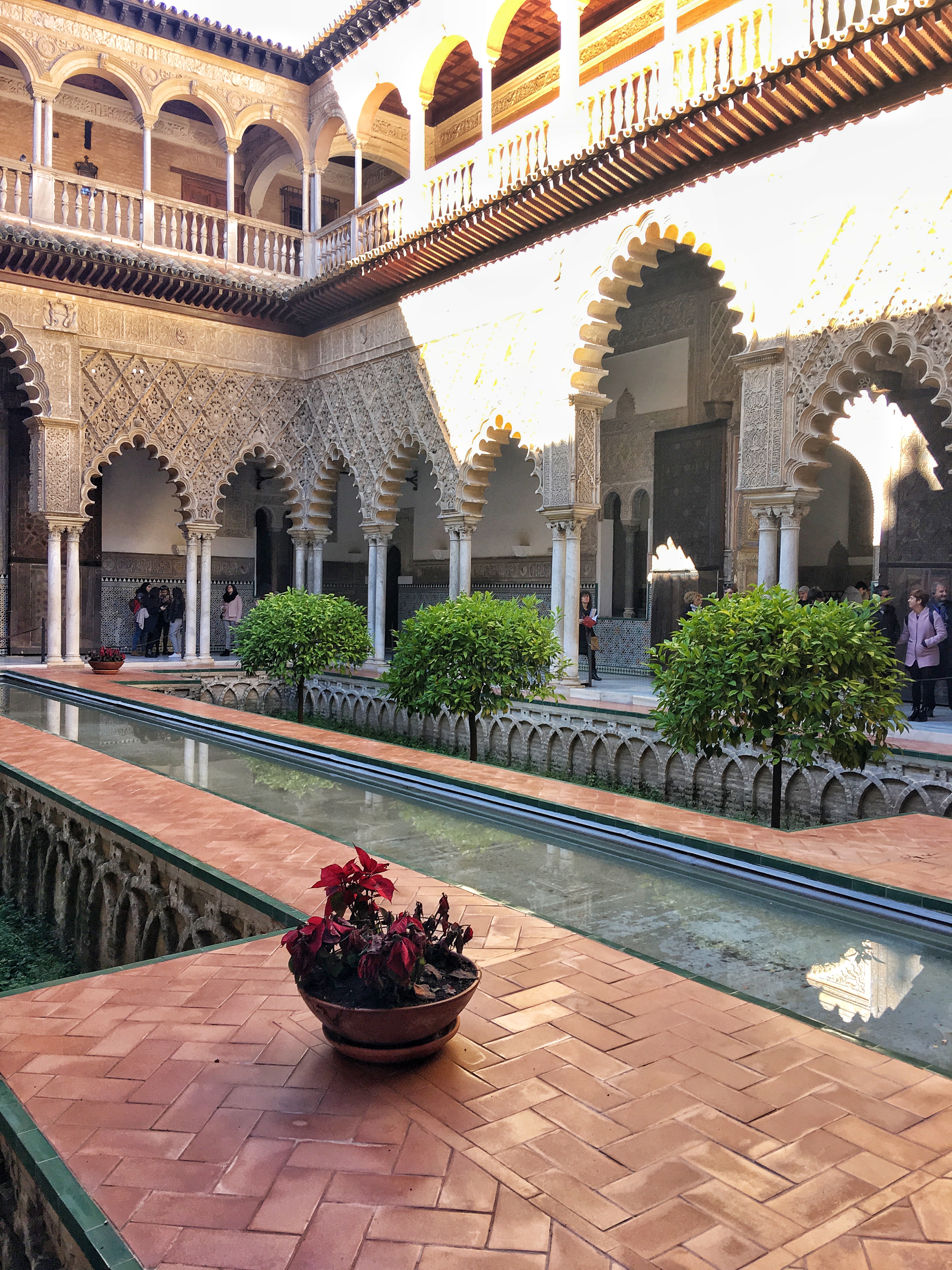
The Real Alcazar features a combination of Islamic structures and Spanish Gothic designs (much of this has to do with it’s rocky transitional history). This unique blend of styles is now called Mudéjar. The origins of the Real Alcazar can be dated back to 8th century, the time of the Moorish invasion of Seville. The citadels were built in the 10th century during the time of the Almohad (Moroccan Berber Muslim movement) occupation. It was then re-claimed by the Kings of Spain in the 13th century.
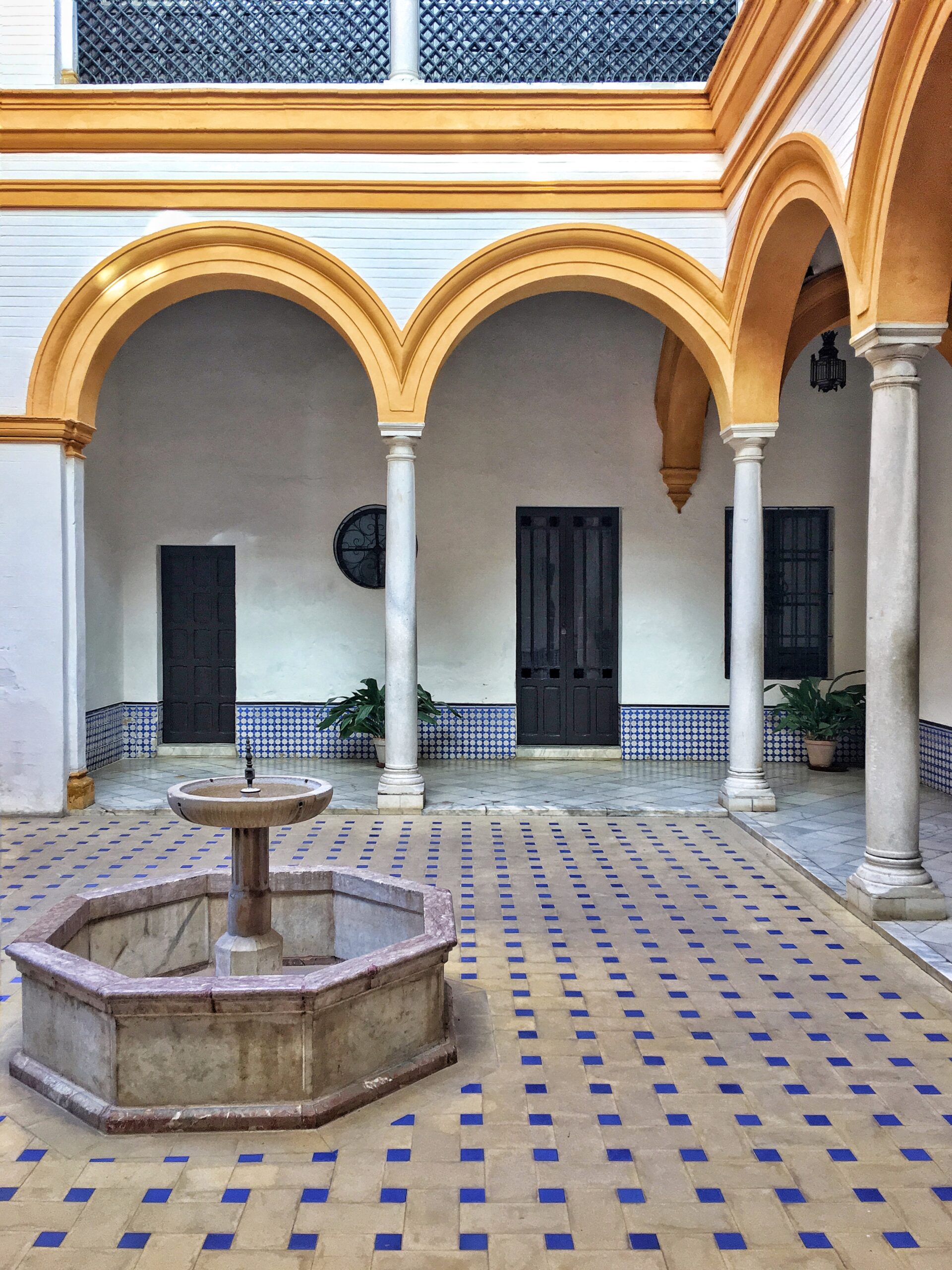
Aren’t those tiles just swoon-worthy? I loved all of the bright colors and patterns displayed in the architecture!
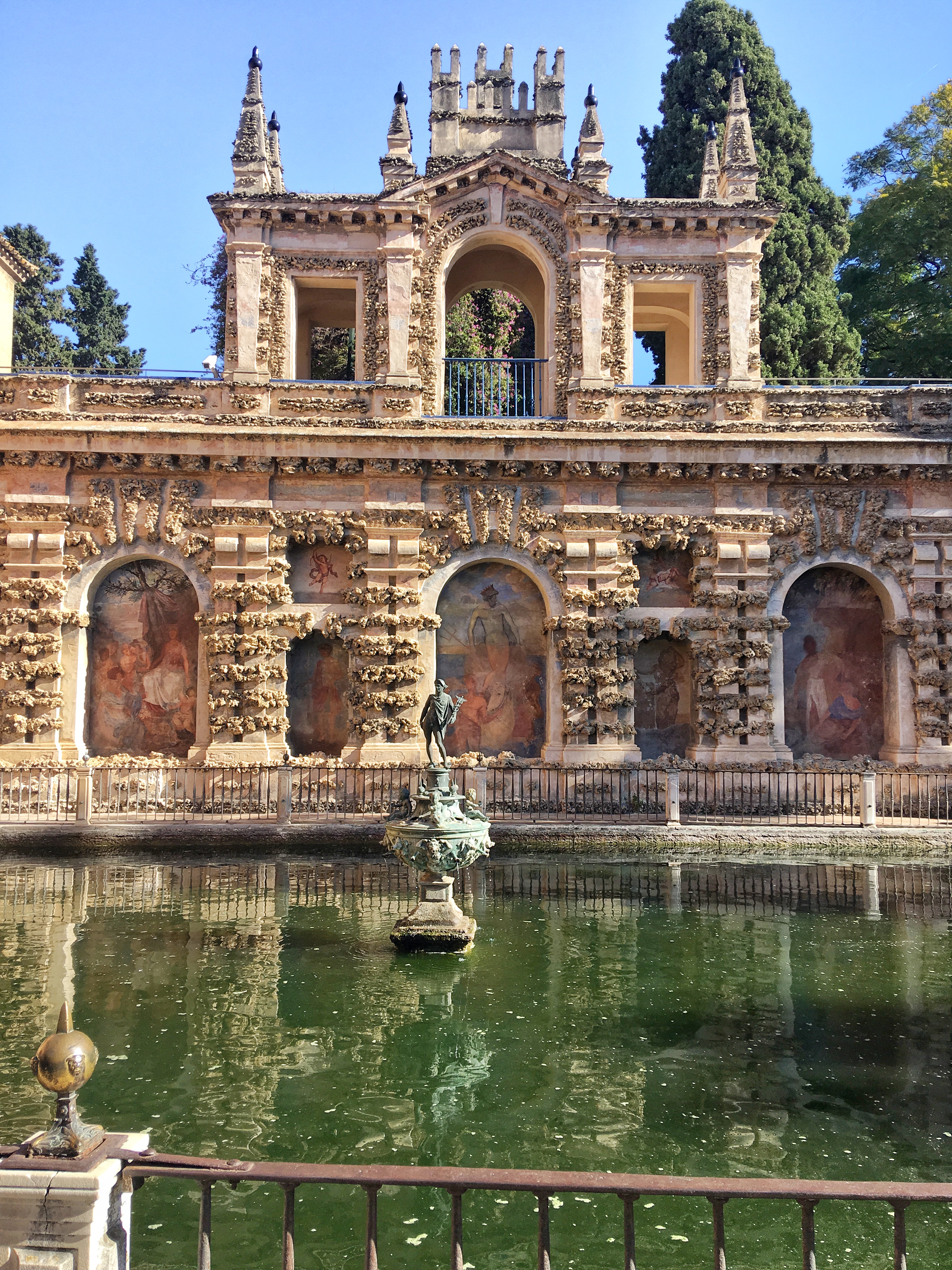
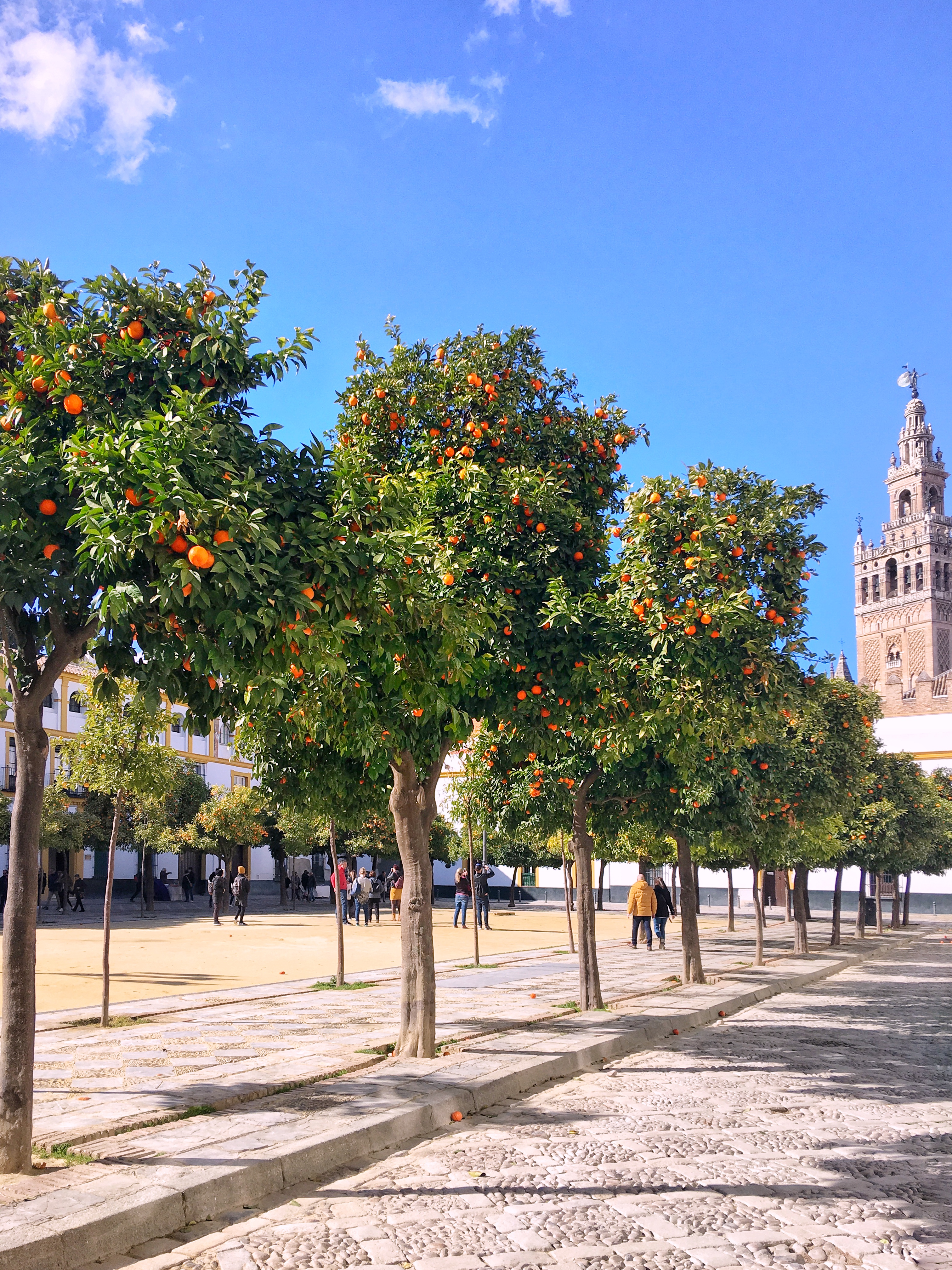
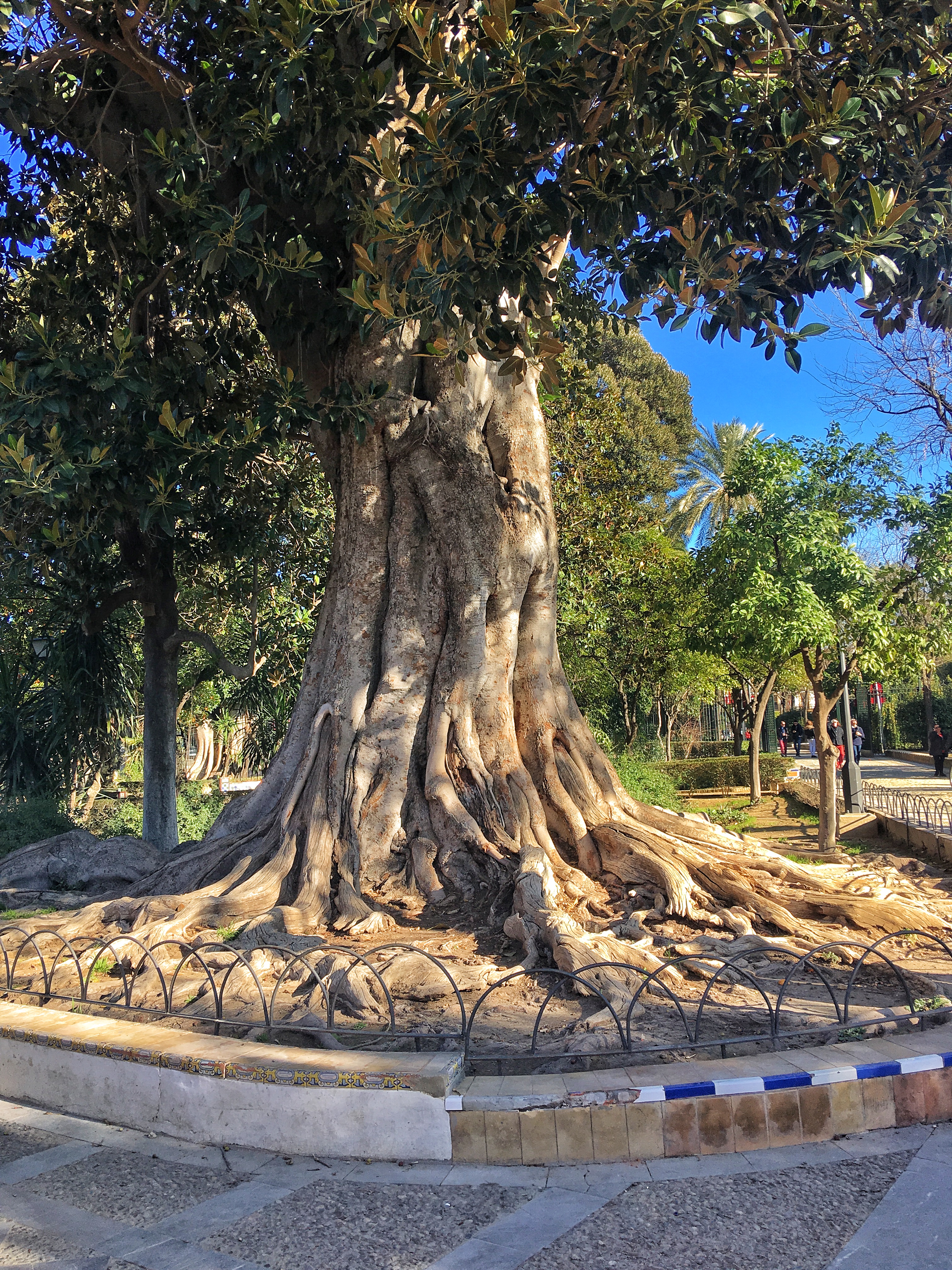
TIP: Skip the queues and pre-order your entrance ticket online. We didn’t do this and regretted it. Even though we went early, we still had to wait in line for 45 minutes before entering the site. You can’t buy ‘day of’ tickets online, so book them at least a day in advance!
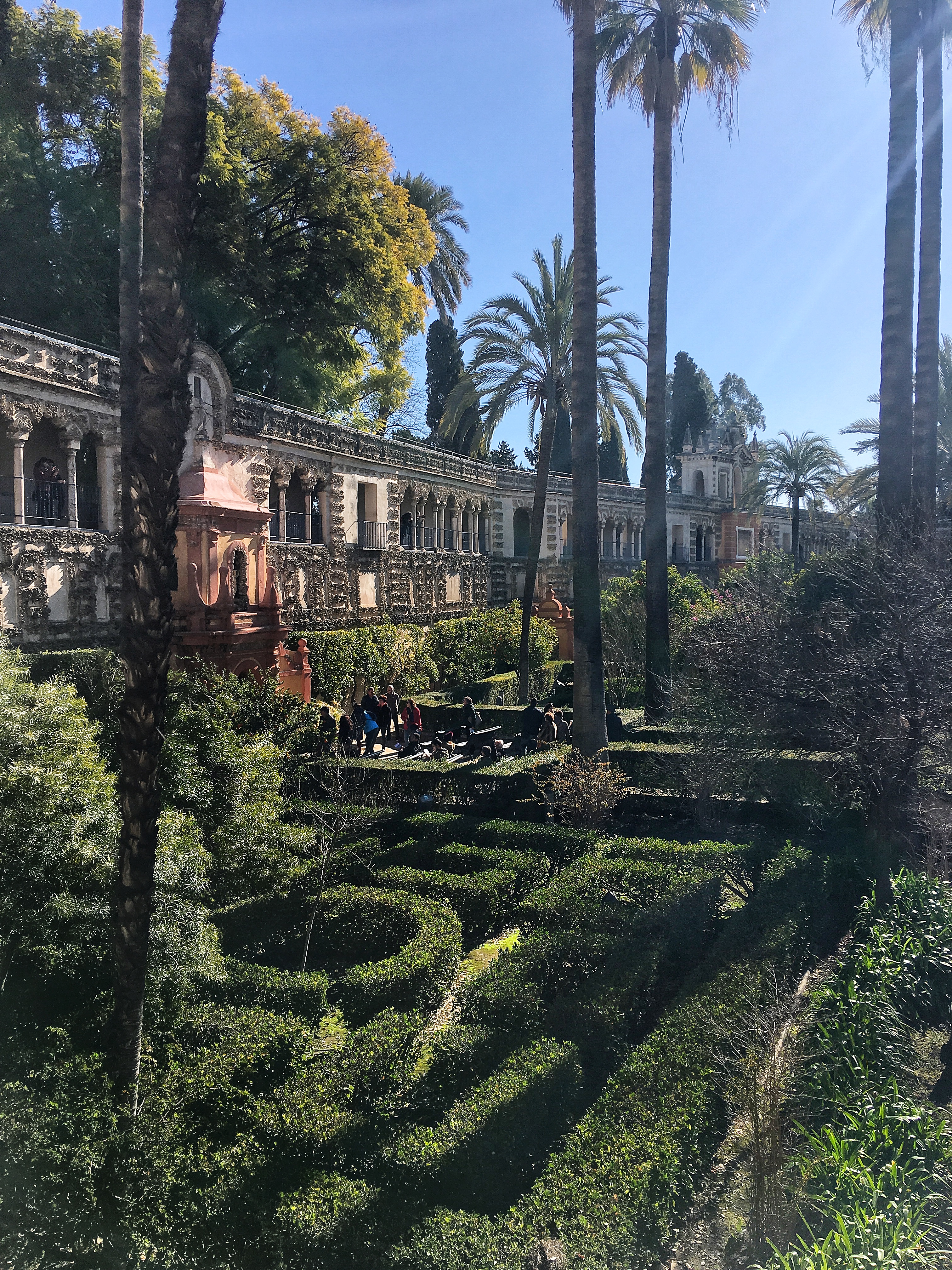
Stay in a Patio House
Stay in a traditional 18th century Seville patio house at the Las Casa del Arenal. We loved our stay at this hotel so much (particularly the welcome champagne and fresh fruit platter). From the traditional style decor and plant-filled courtyard, to the friendly service of the staff…we genuinely thought that this was one of the best stays we’ve ever had while traveling. My husband also claims that the bed at Casa del Arenal was one of the most comfortable beds he’d ever slept on.
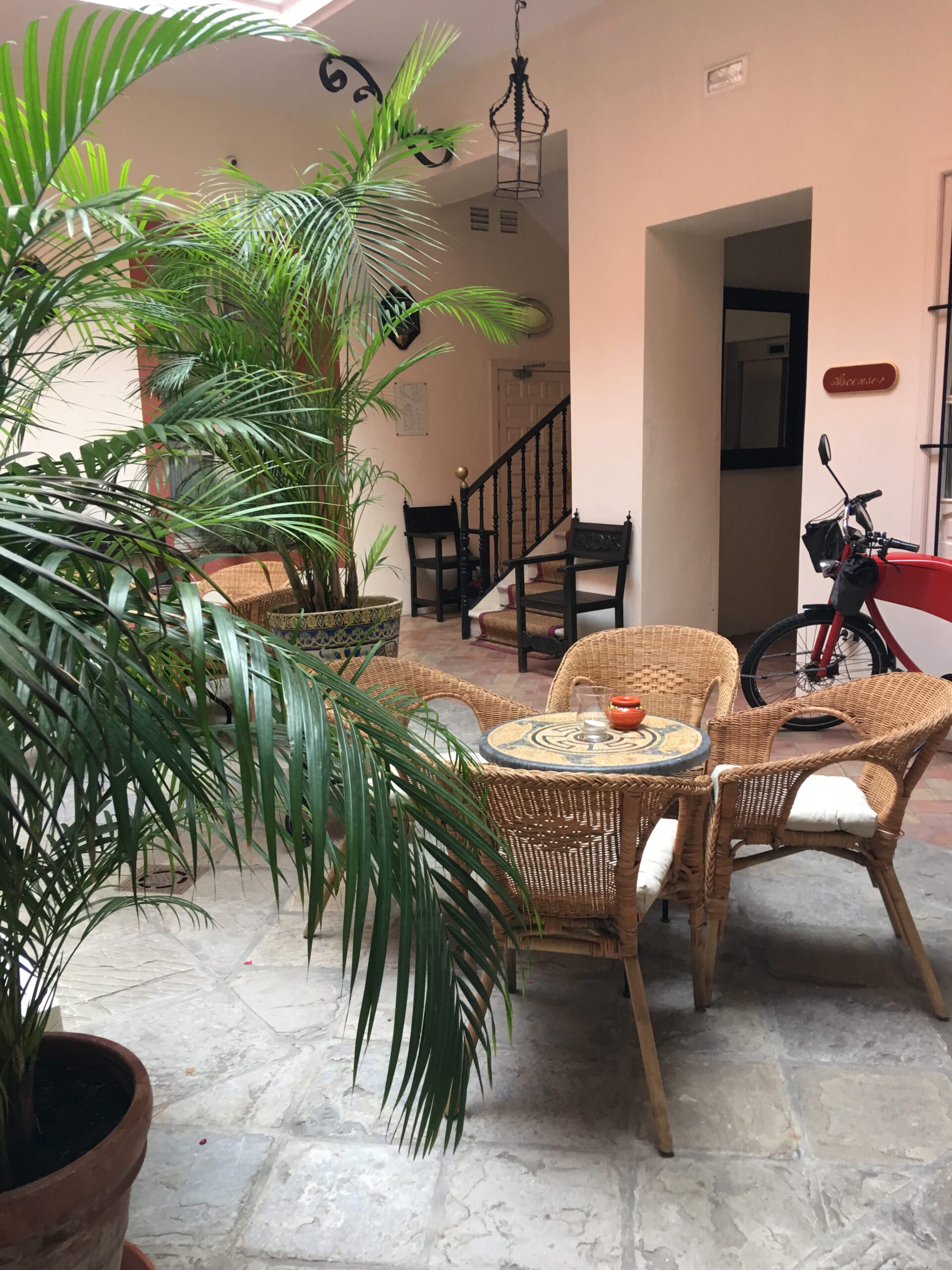
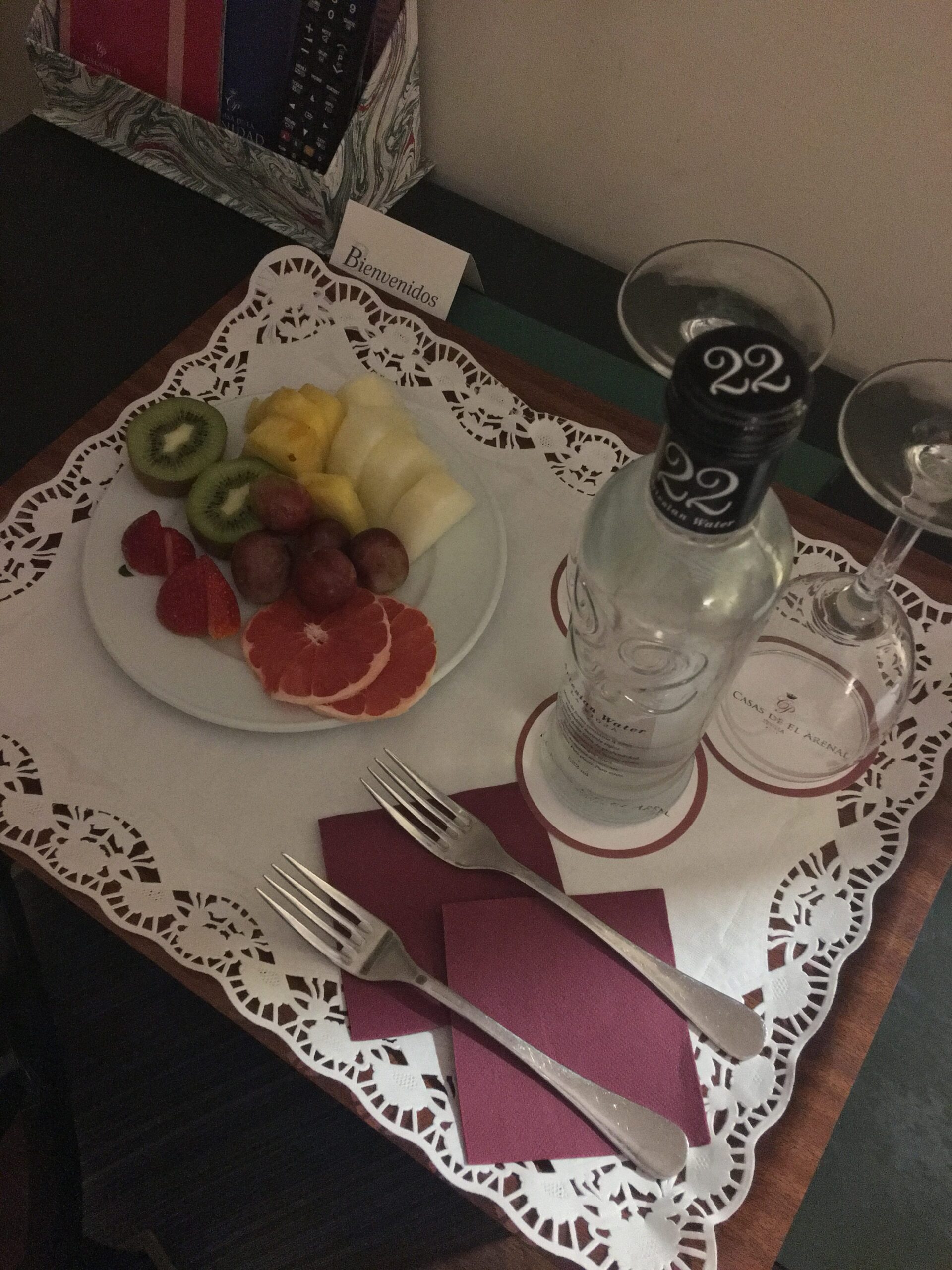
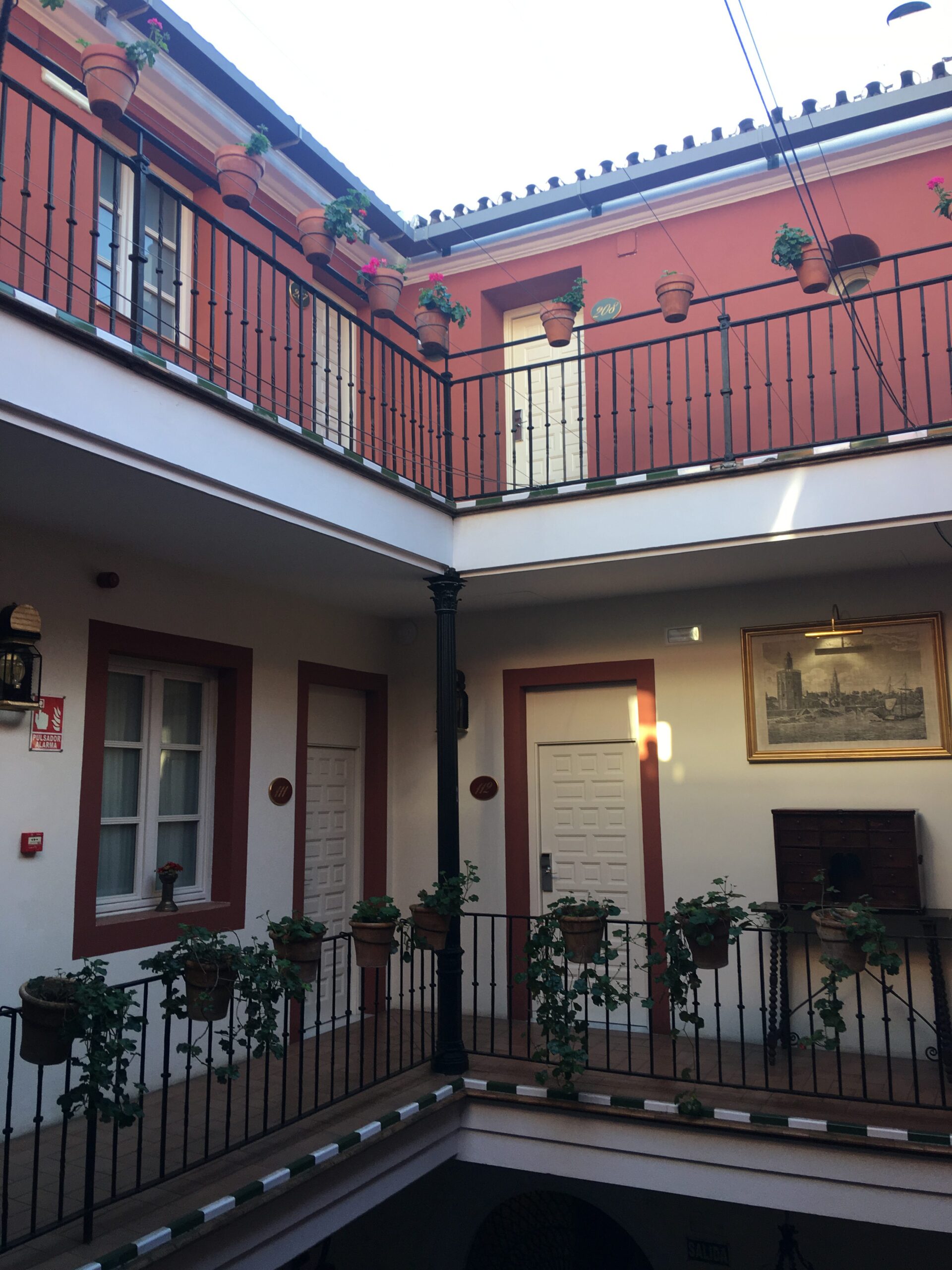
Where to eat in Seville
I have a whole dedicated post to where to eating tapas in Seville, which you can find here!
Need help planning a trip to Seville, or have questions? Leave me a comment below!

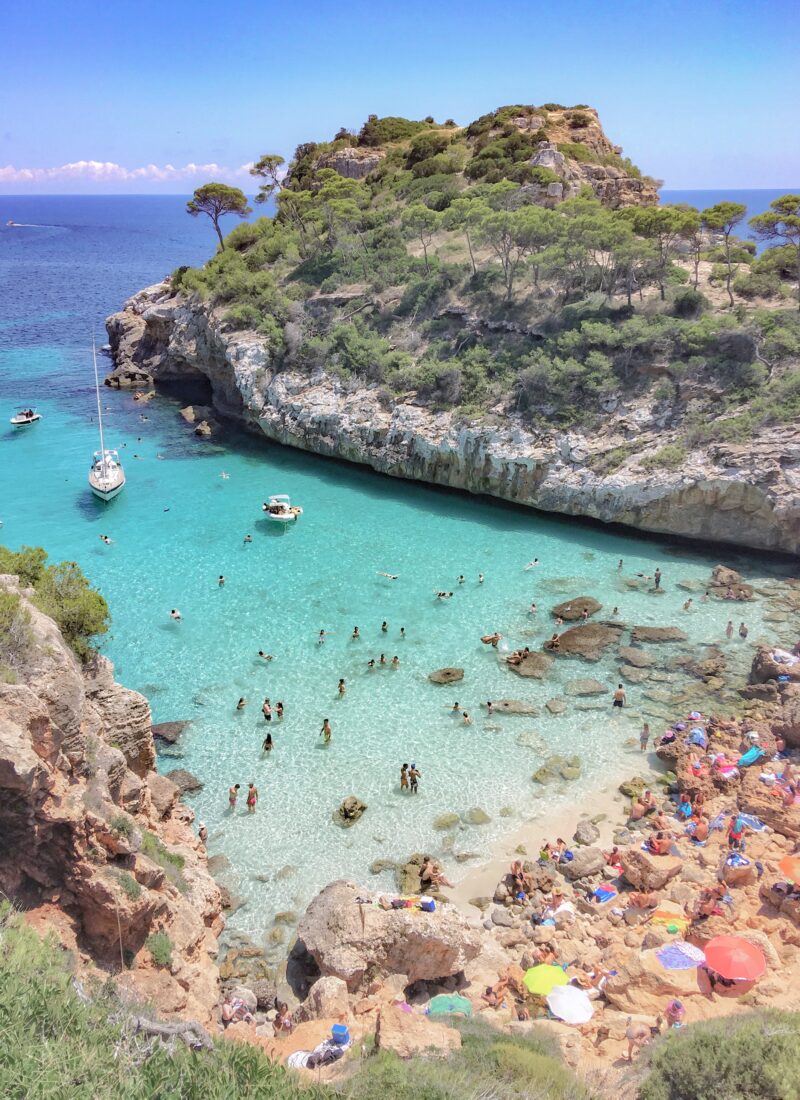
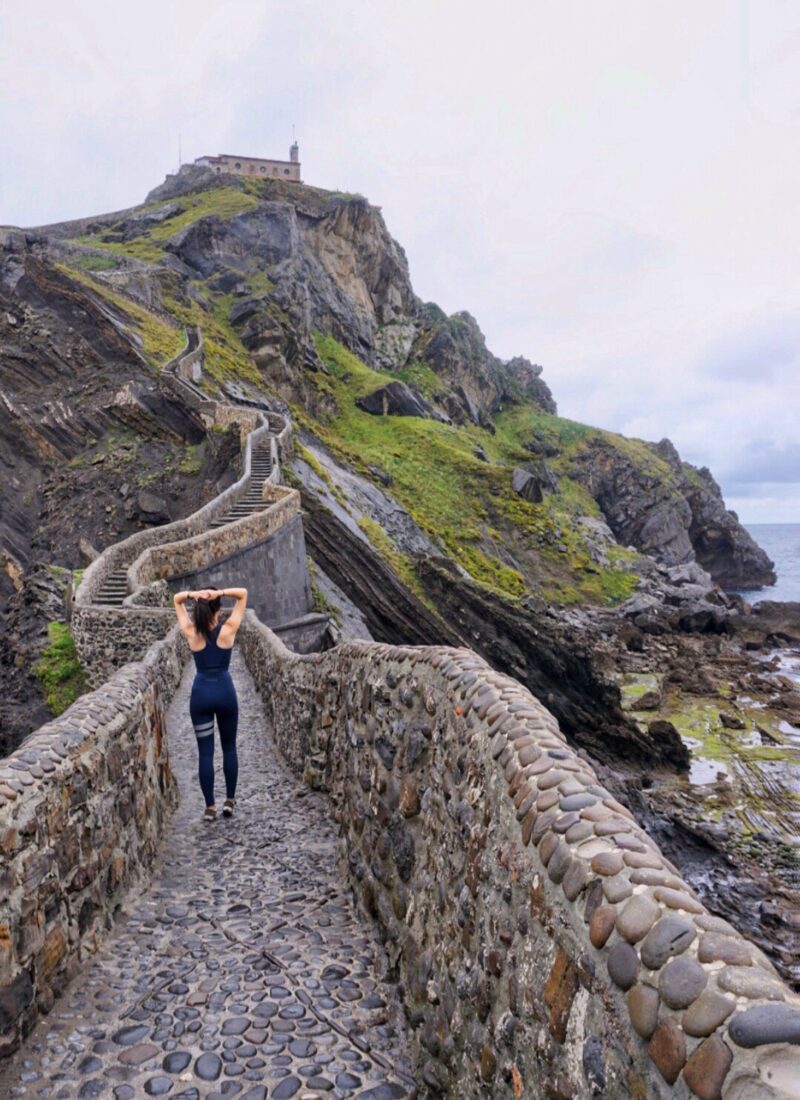


My husband and I are thinking of going to Seville in October, how many days would you recommend, and would you recommend going to Itallica to see the Roman ruins. Possibly thinking of side trip to Grenada. Thoughts?
Hi Jessie
planning to visit Sevilla, Malaga and south of Spain in Dec/Jan 2022. Accuweather gives a rainy forecast (overcast, 2 hrs of rain). Is it worth planning the trip ?
Definitely! Even with a rainy forecast I think you can enjoy the city – especially if it’s only forecasted for a few hours.
I am visiting seville in January 2020. We are from nyc and celebrating a 70th birthday. Looking for something really festive to do. Likes classical music, ballet, and opera. Any ideas?
That sounds exciting! I would check-out a few of these places:
1. https://www.tripadvisor.co.uk/Attraction_Review-g187443-d14028856-Reviews-Teatro_Flamenco_Triana-Seville_Province_of_Seville_Andalucia.html – Dinner and Flamenco Show
2. https://www.viator.com/en-GB/tours/Seville/Seville-Opera-Performance-with-Optional-Dinner/d556-2198SVQOPERA – Seville Opera
3. https://www.tripadvisor.co.uk/Restaurant_Review-g187443-d12479835-Reviews-Ispal_Restaurante-Seville_Province_of_Seville_Andalucia.html – Fine dining Andalusian cuisine with amazing reviews
Personally, I would try a dinner and flamenco show as it showcases the history and culture of the city!!! Enjoy 🙂
I’m here now in August and it is insanely hot. Btw, where’s your dress from its divine!
I can imagine it’s super hot there right now! Stay cool! My dress is from Topshop 🙂